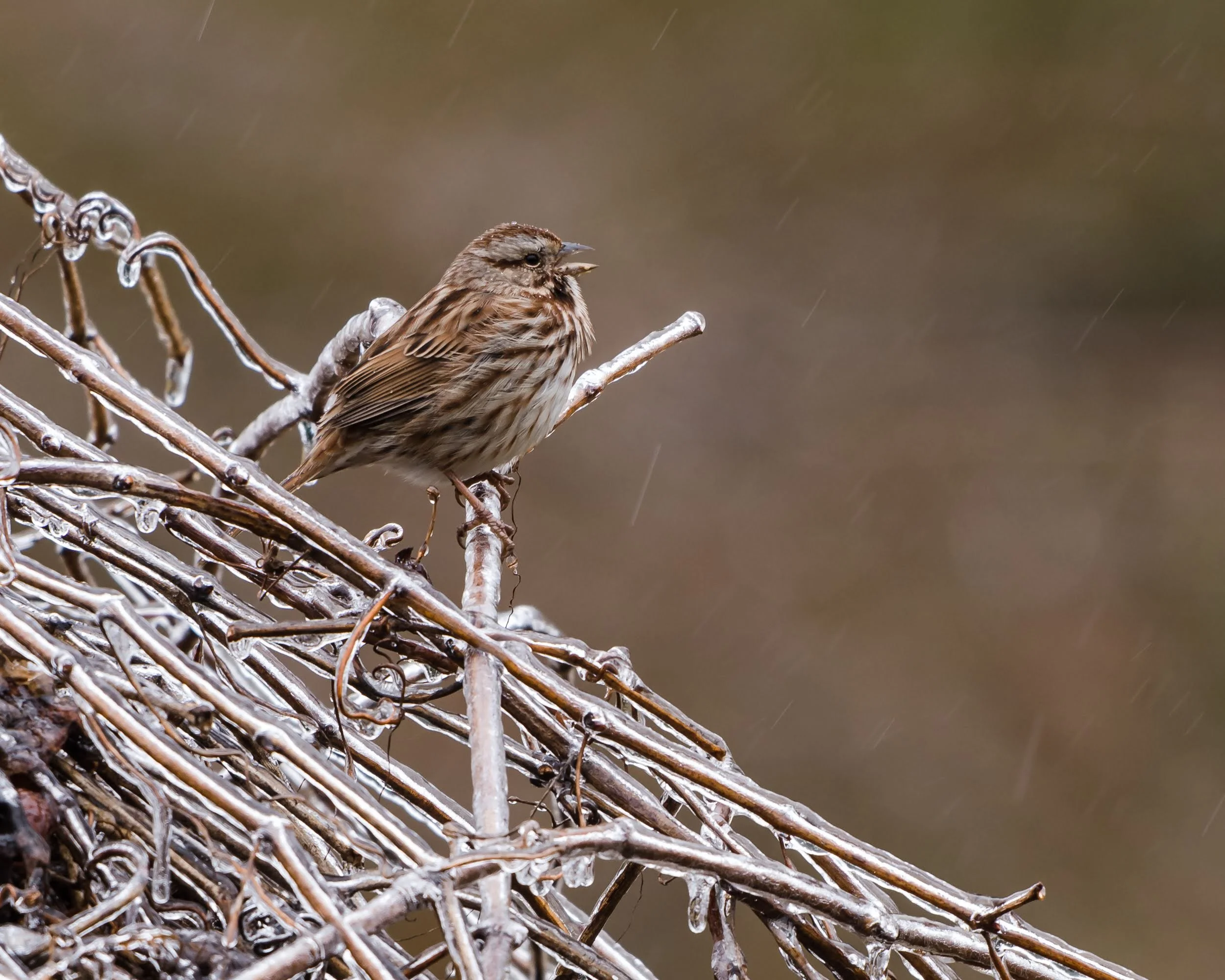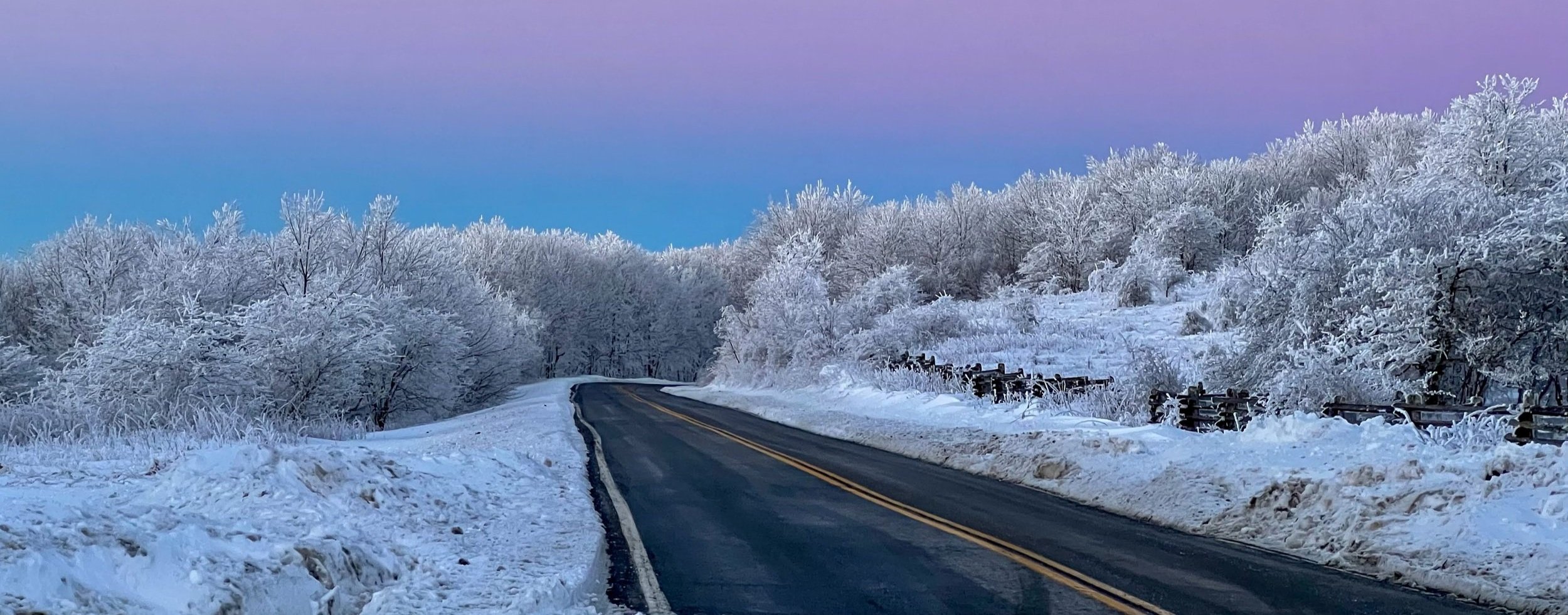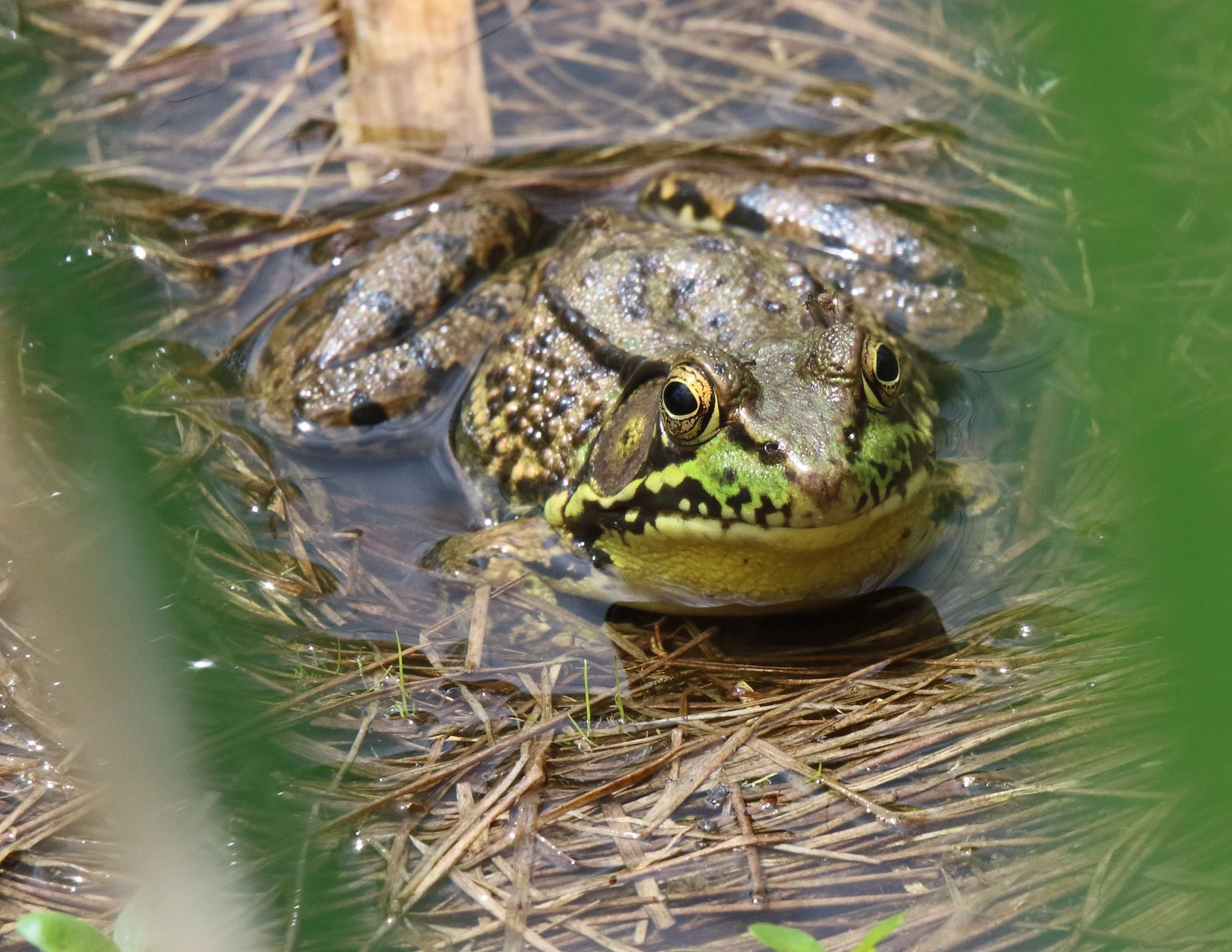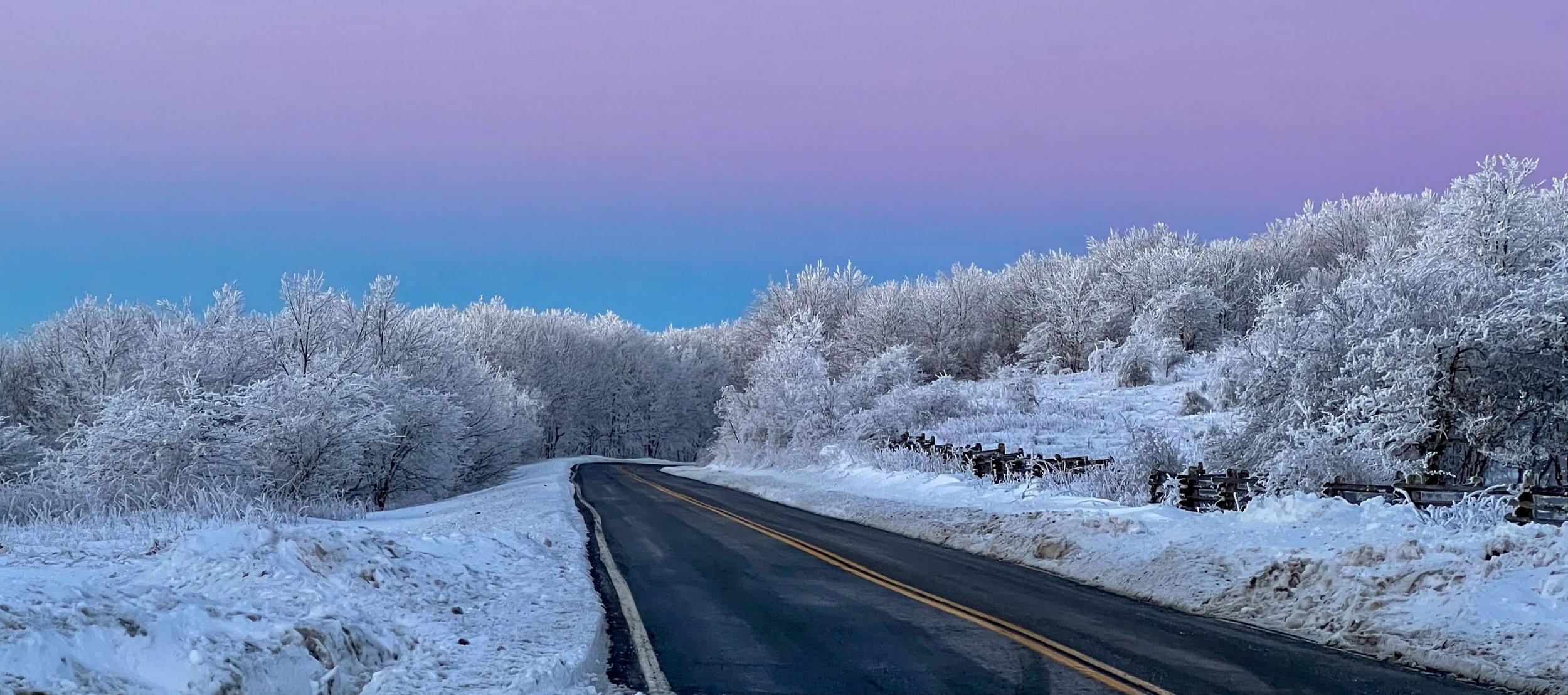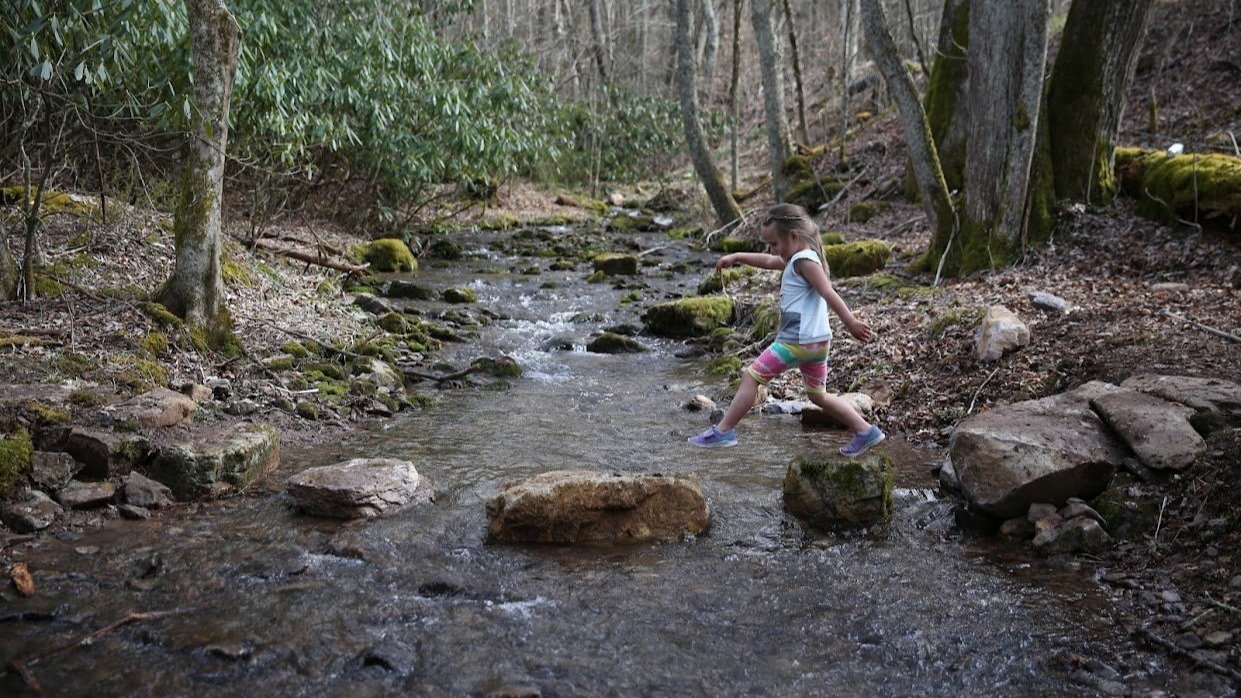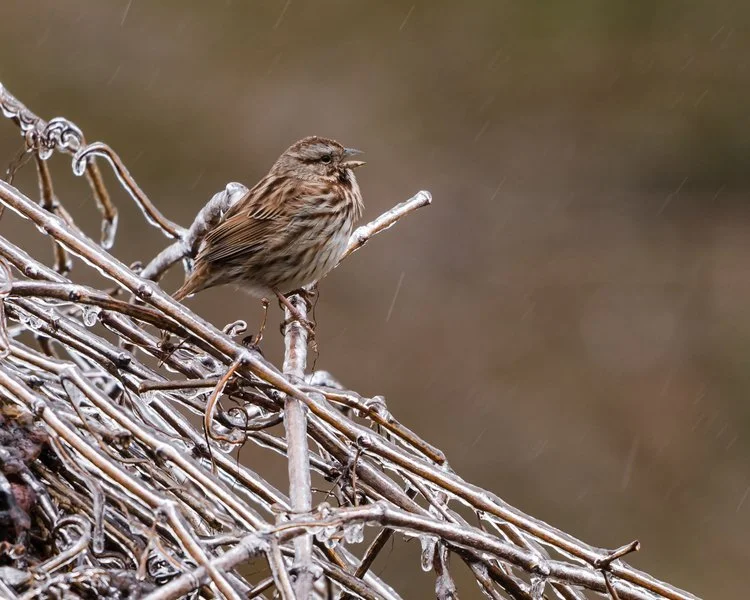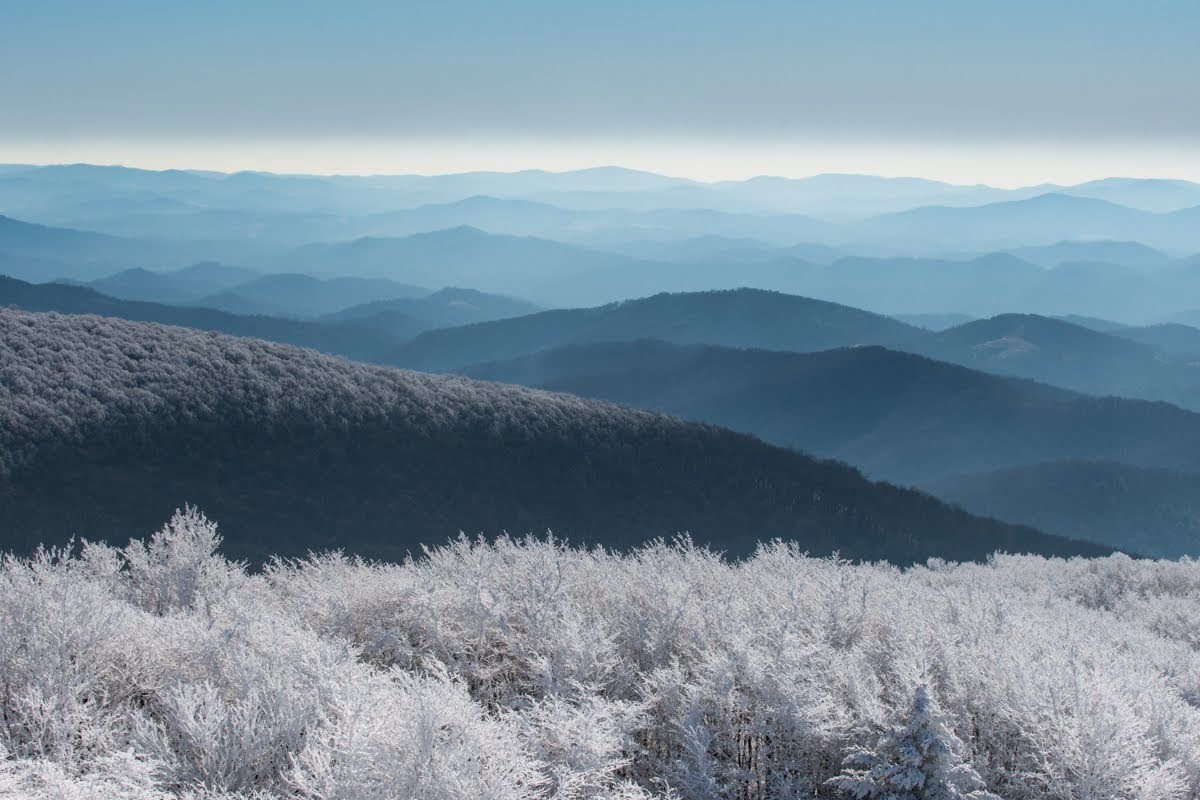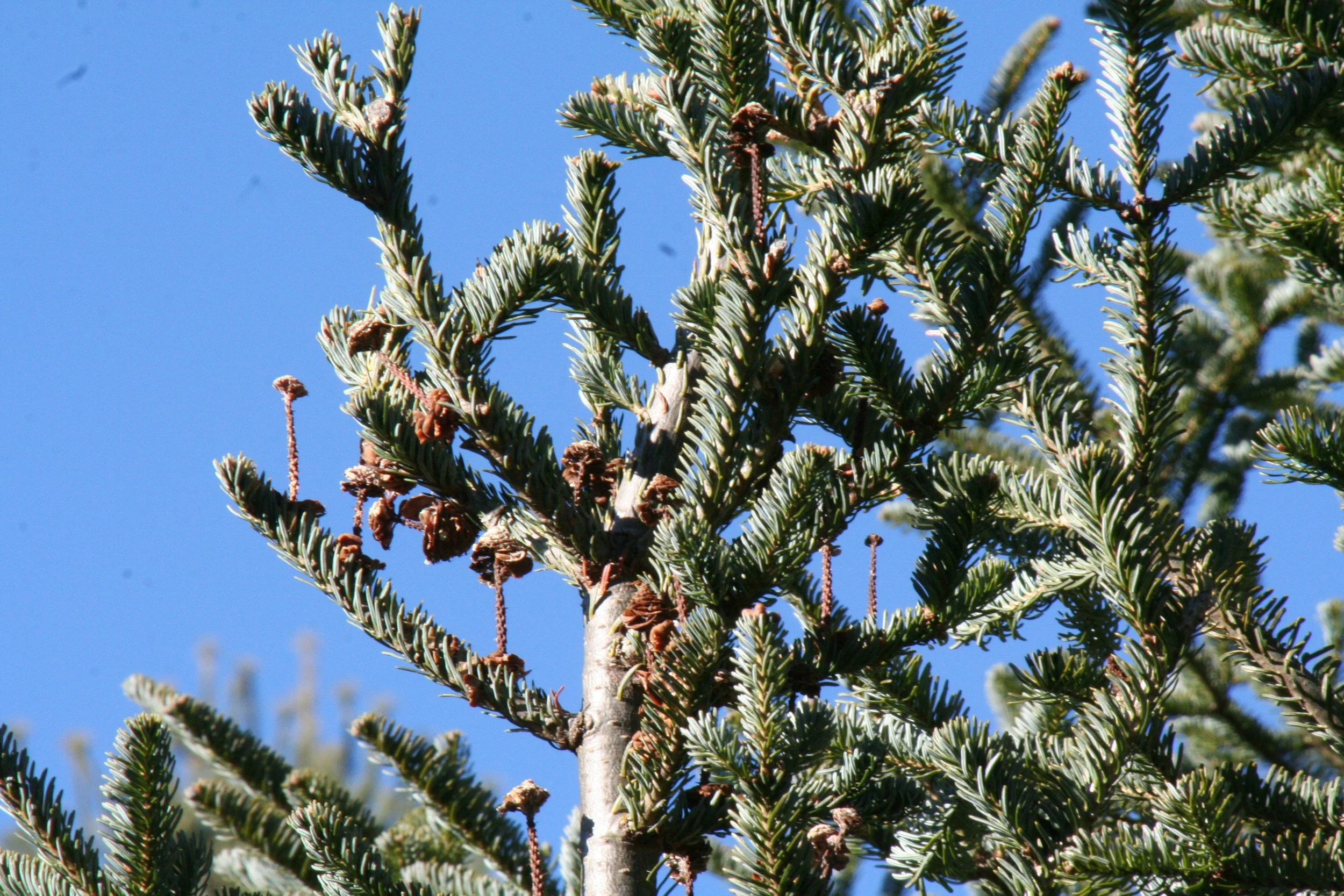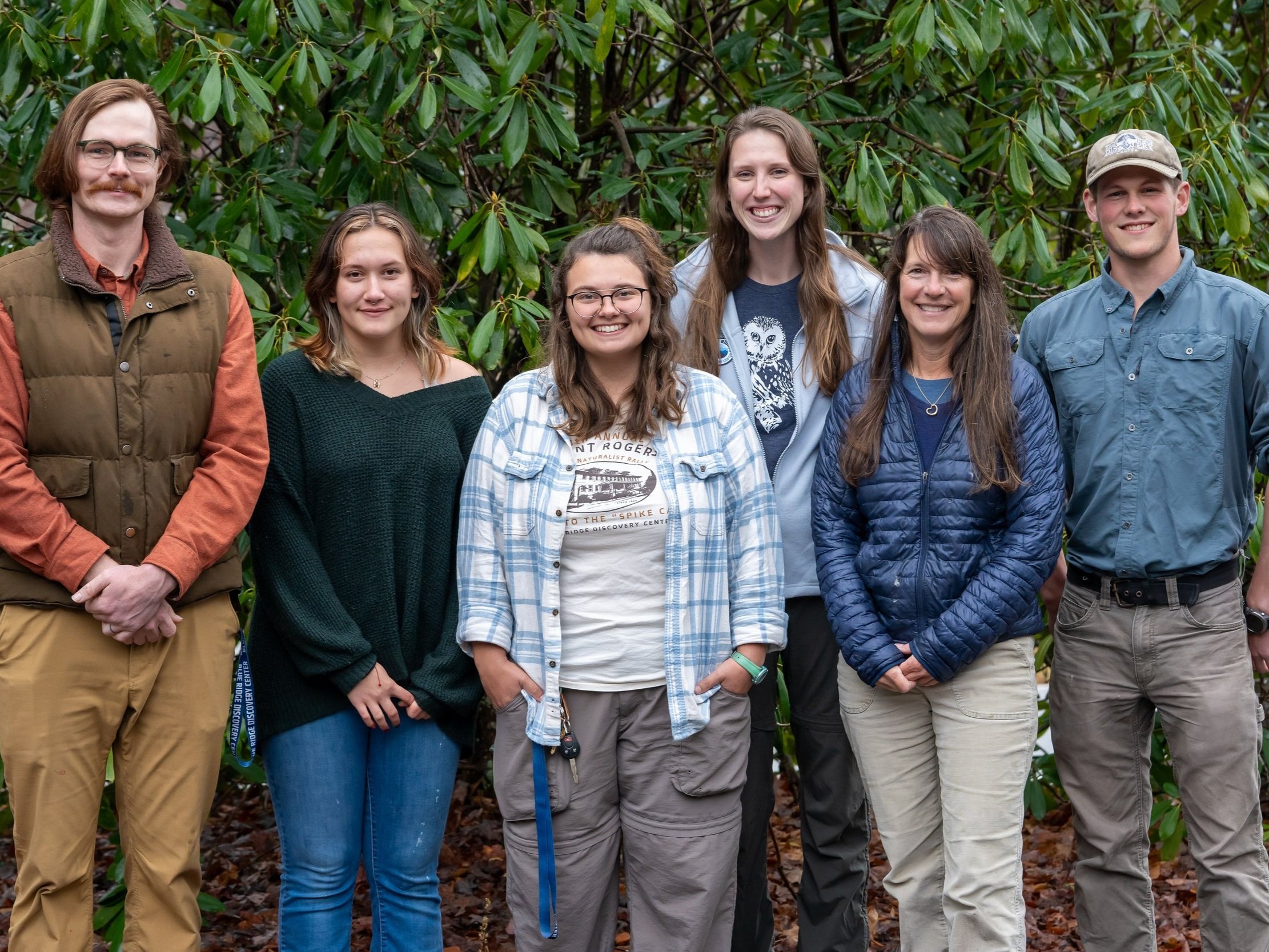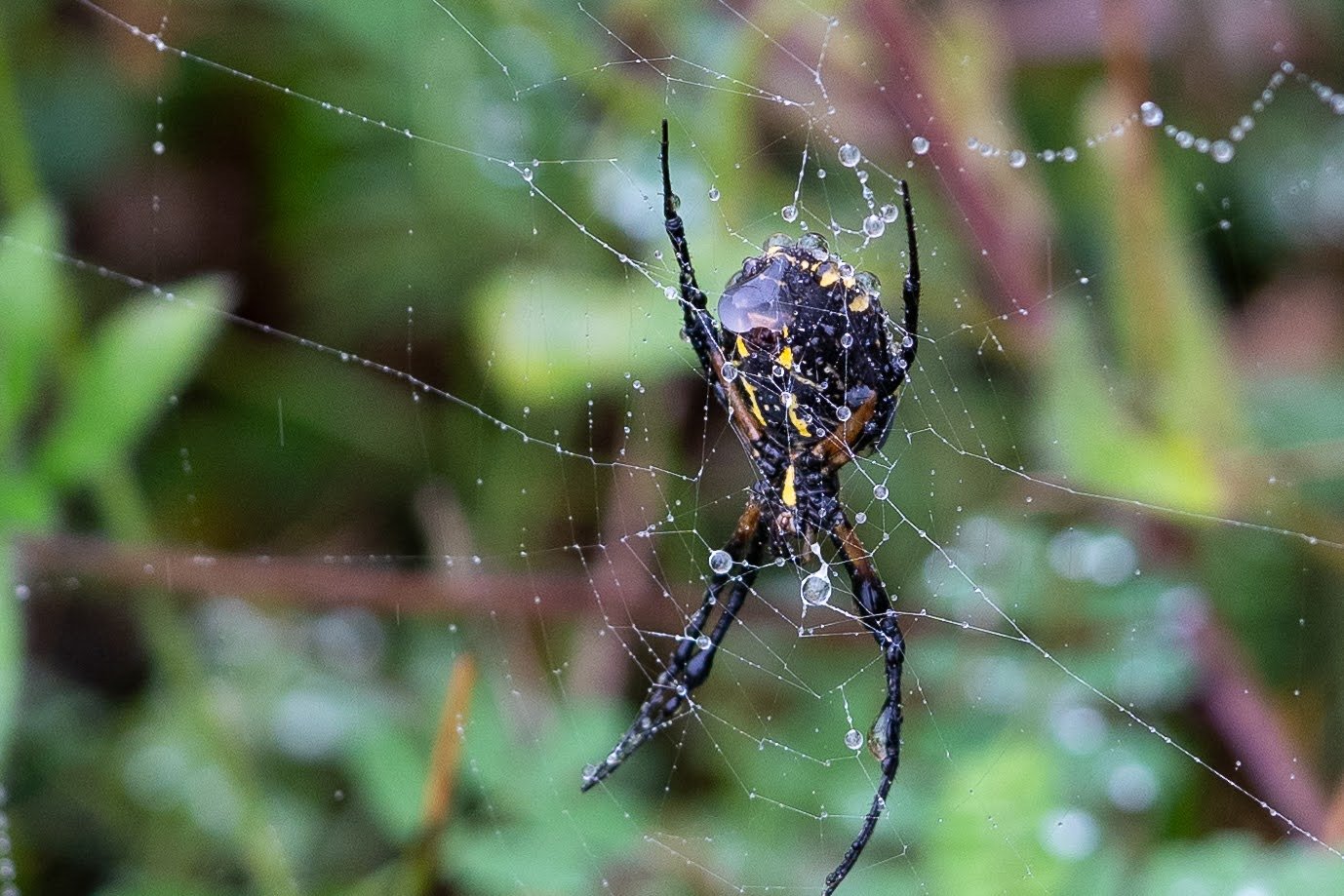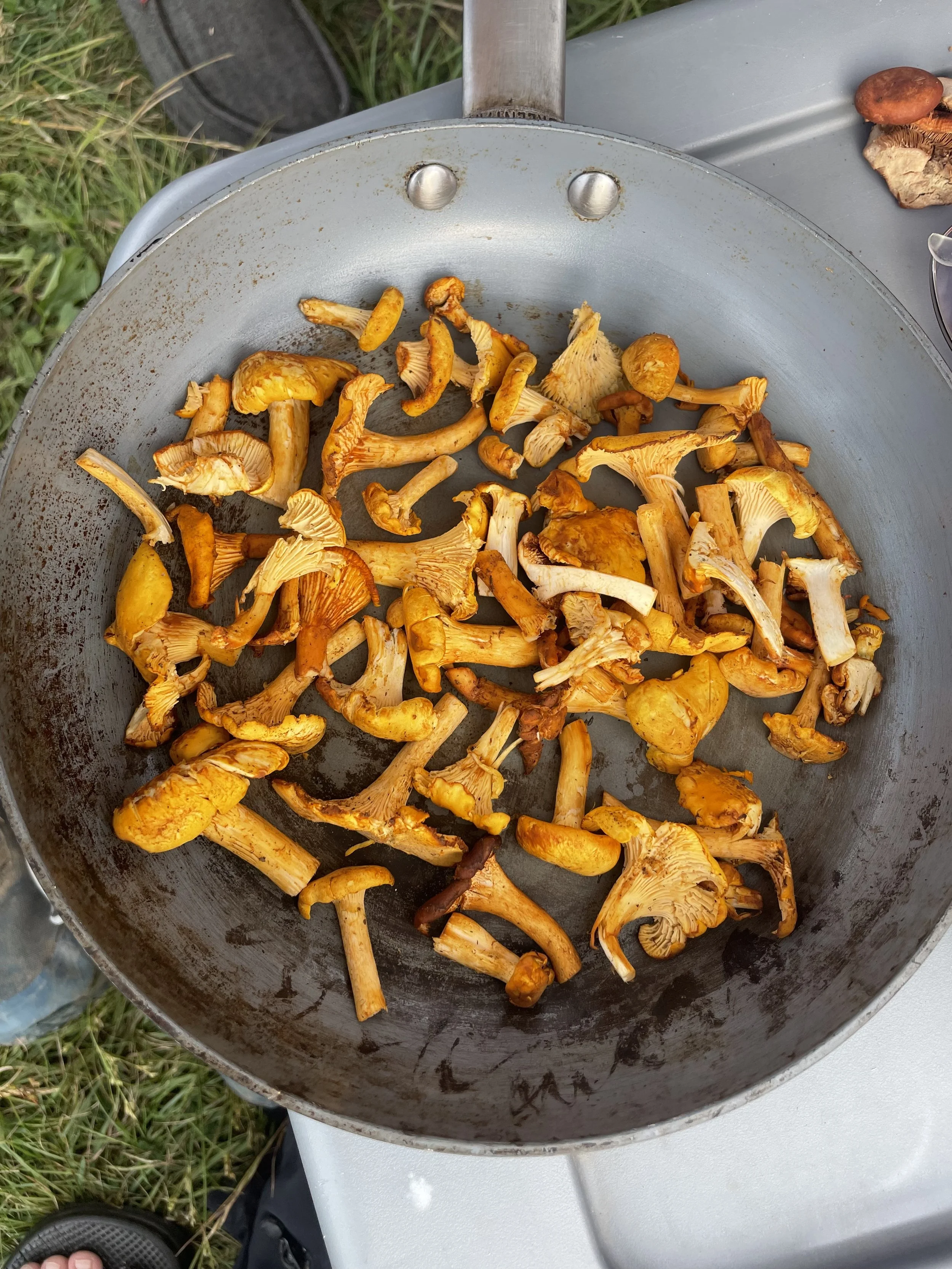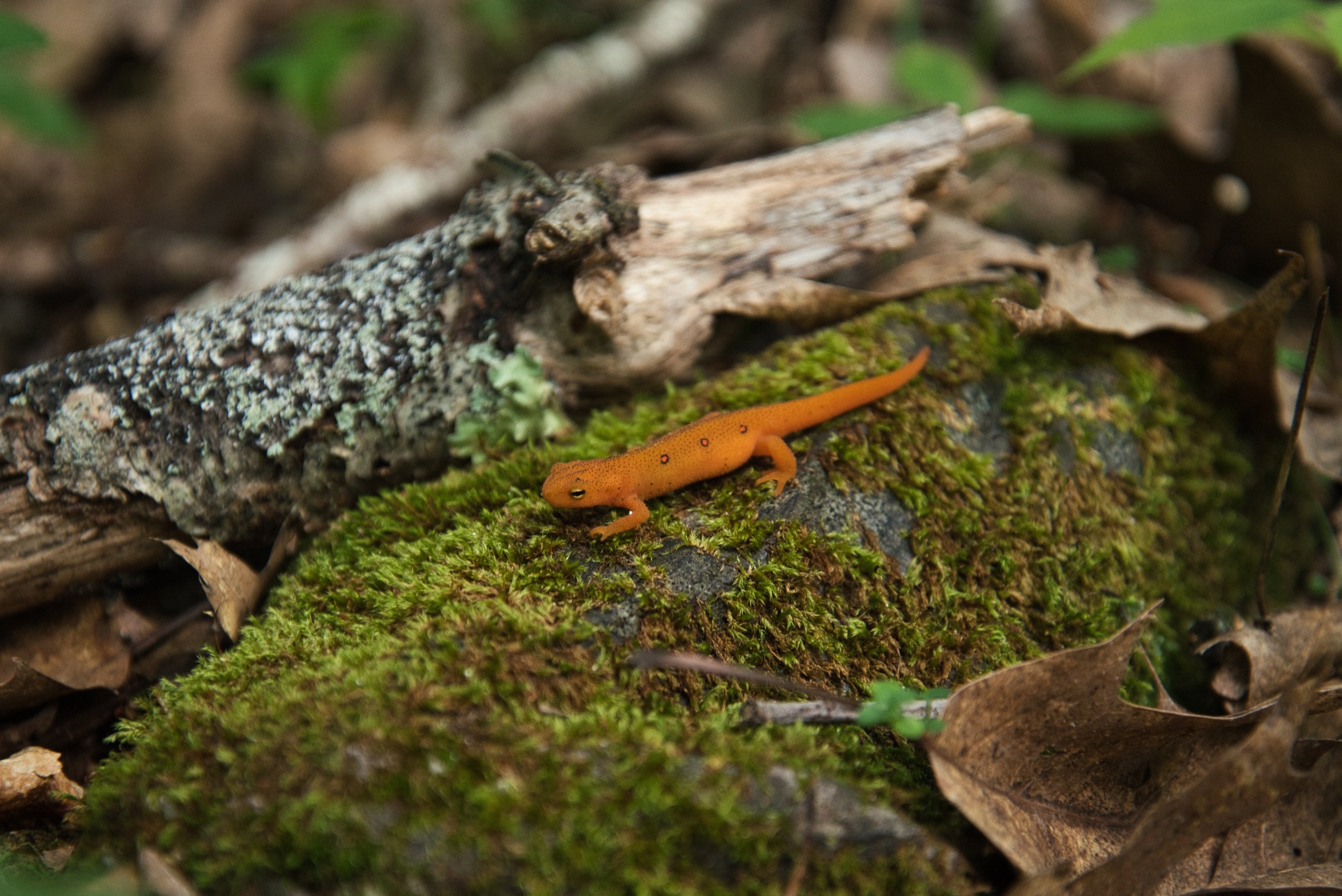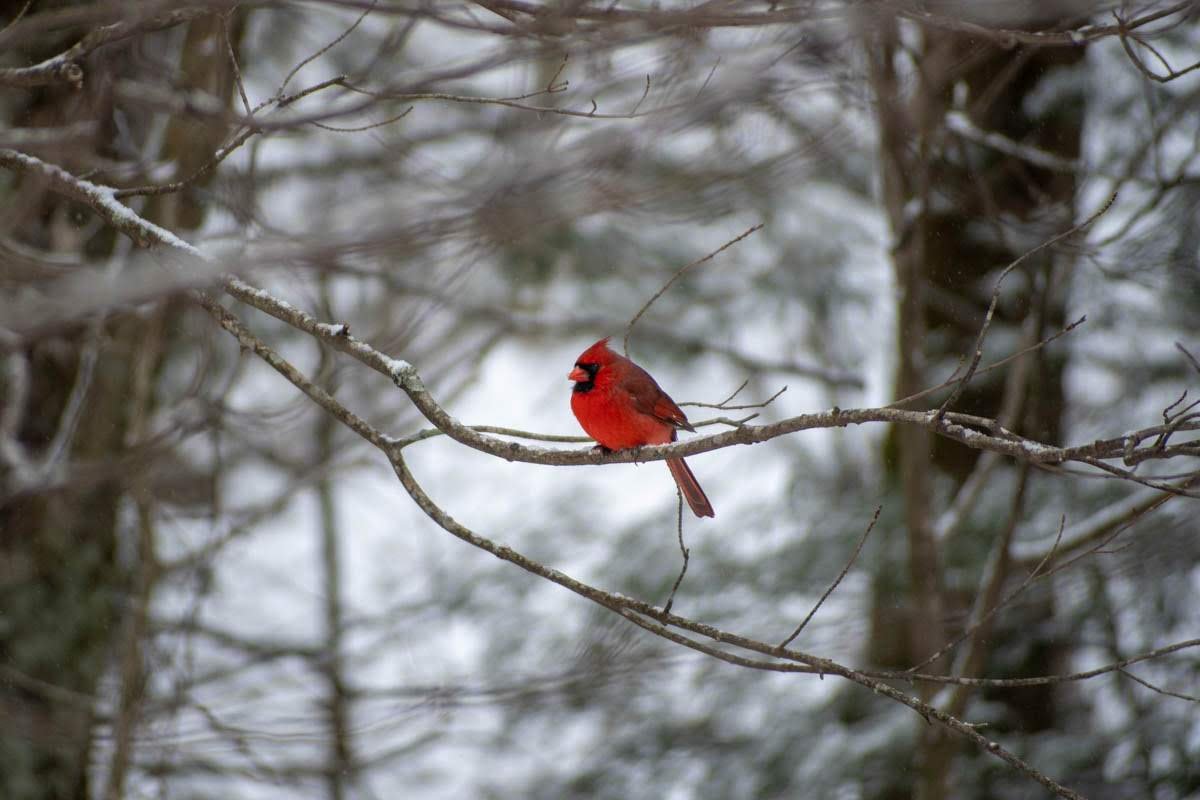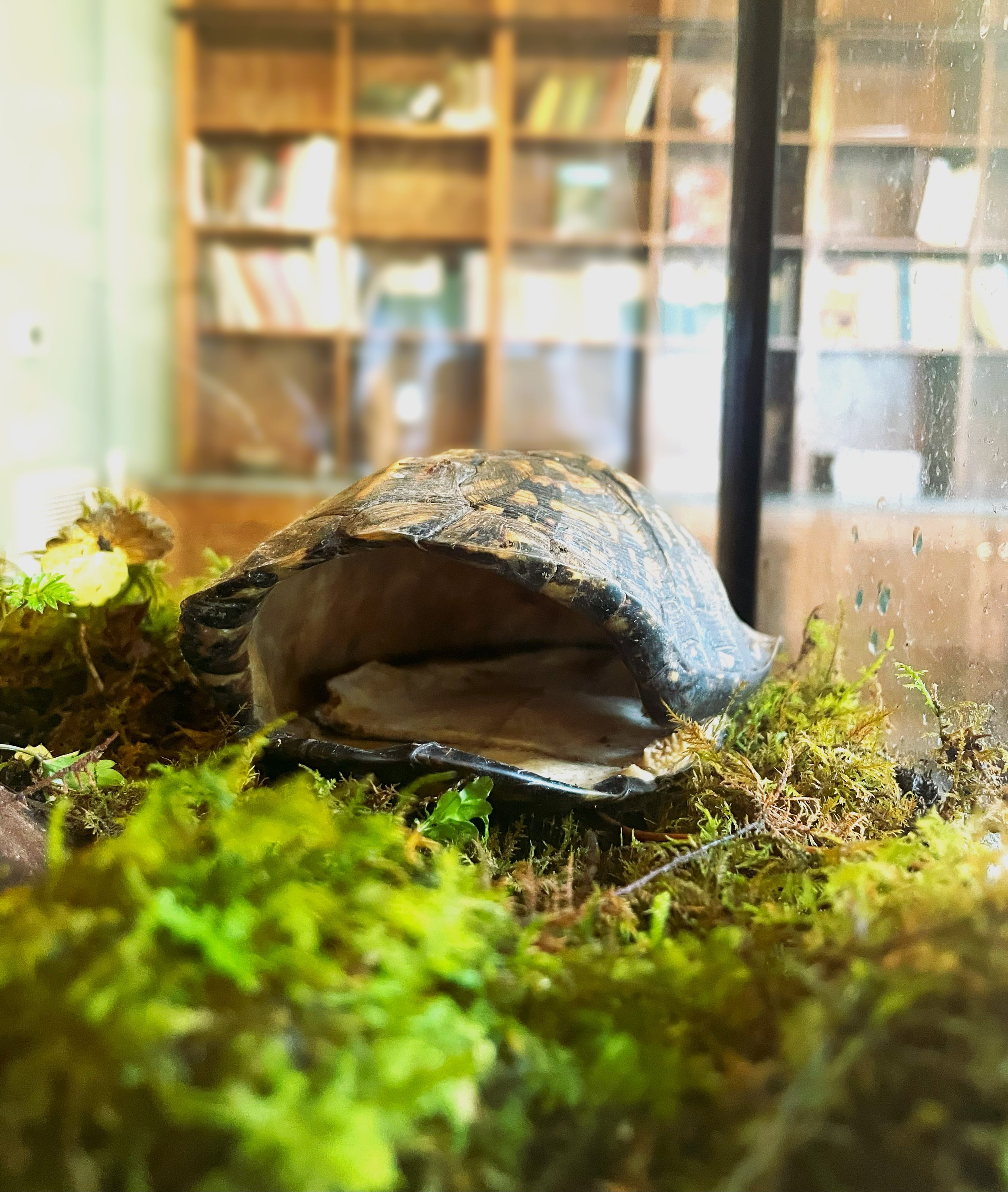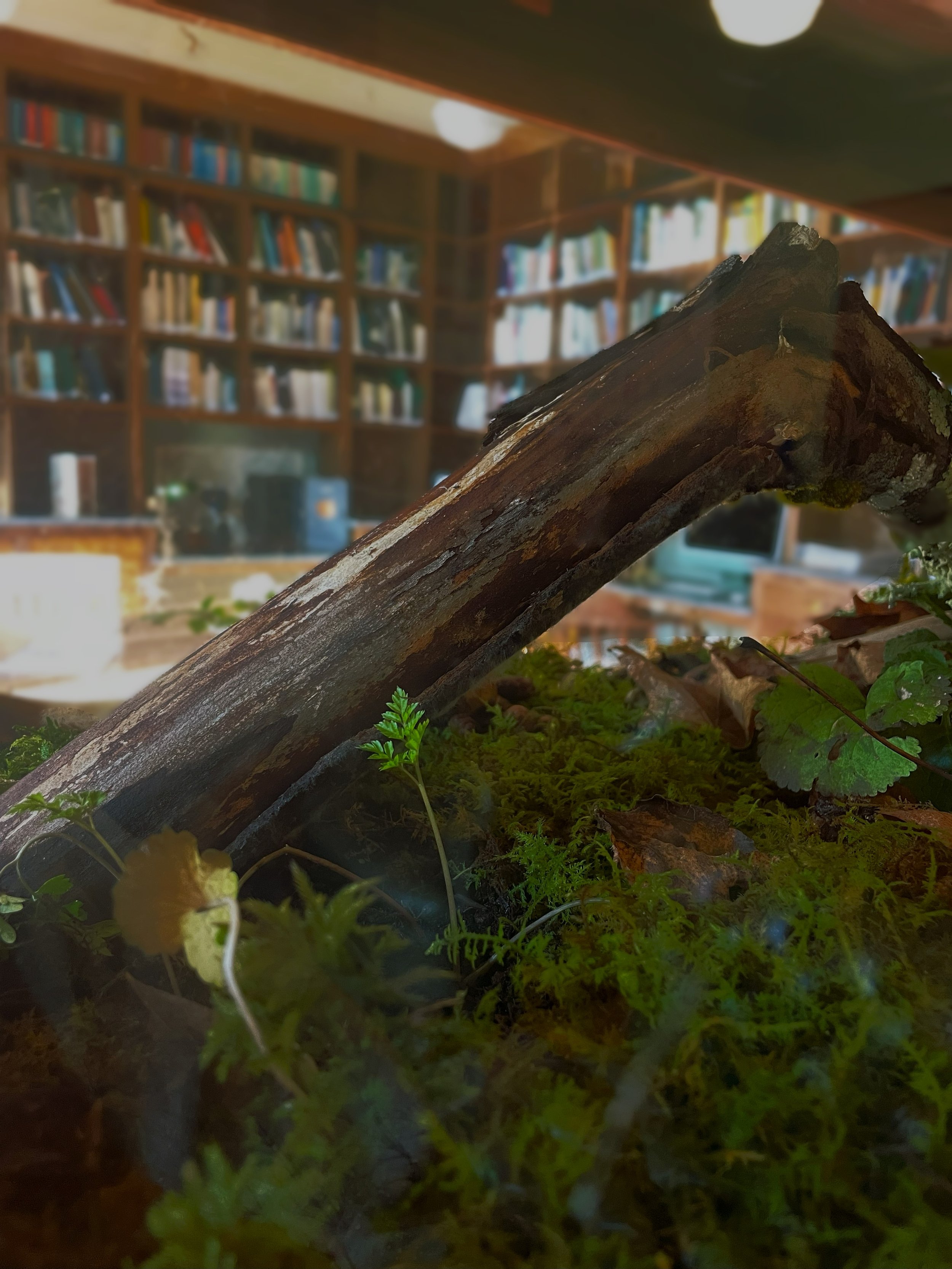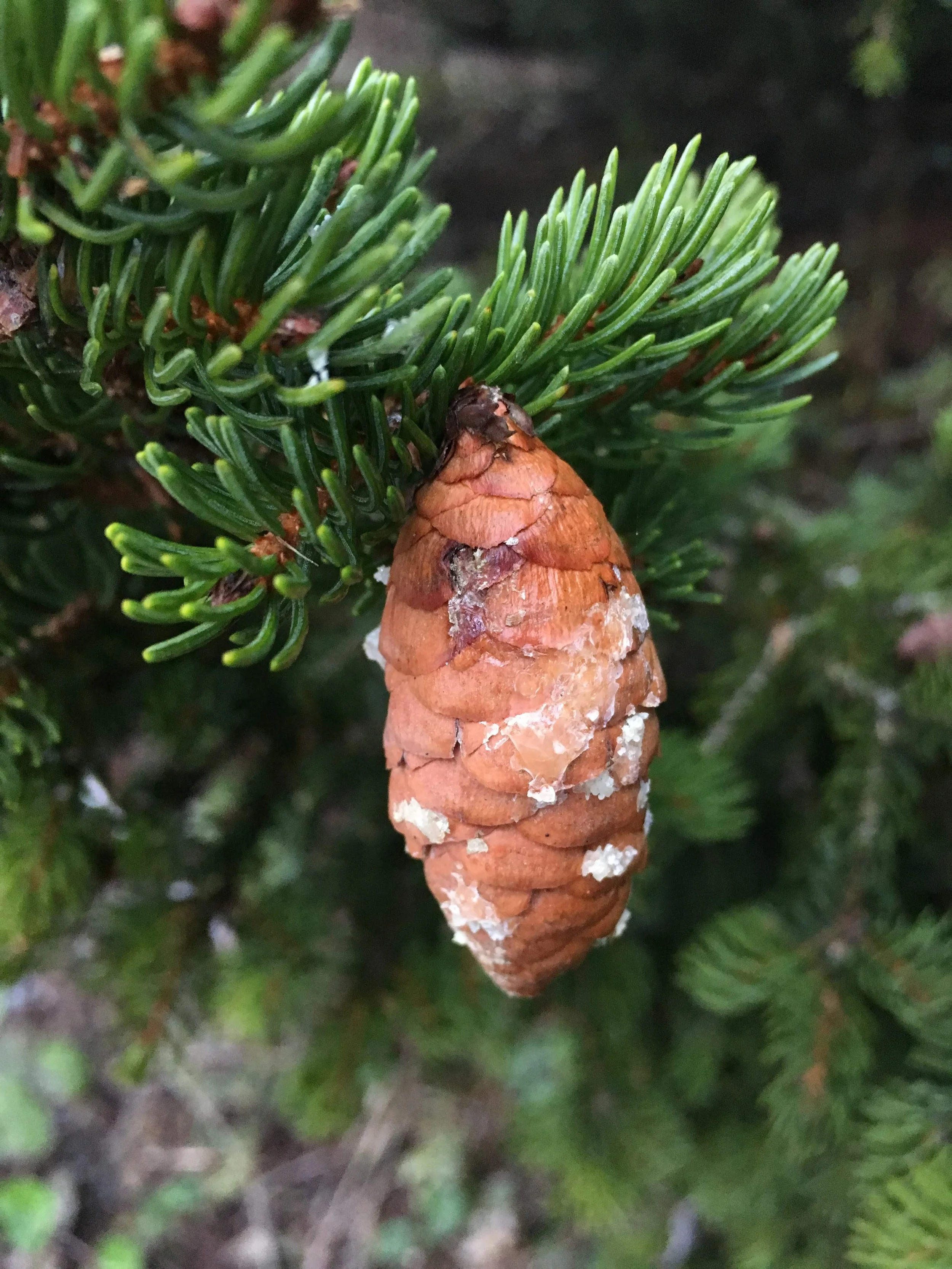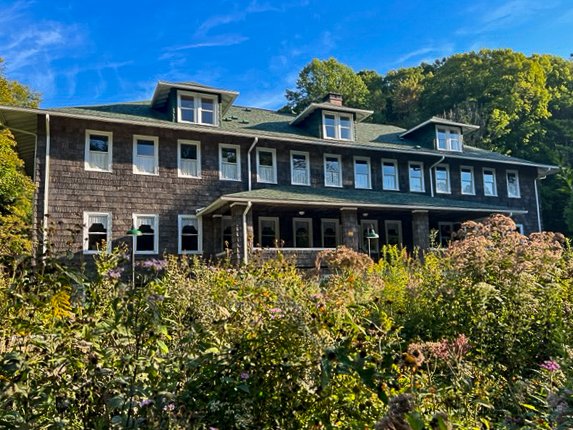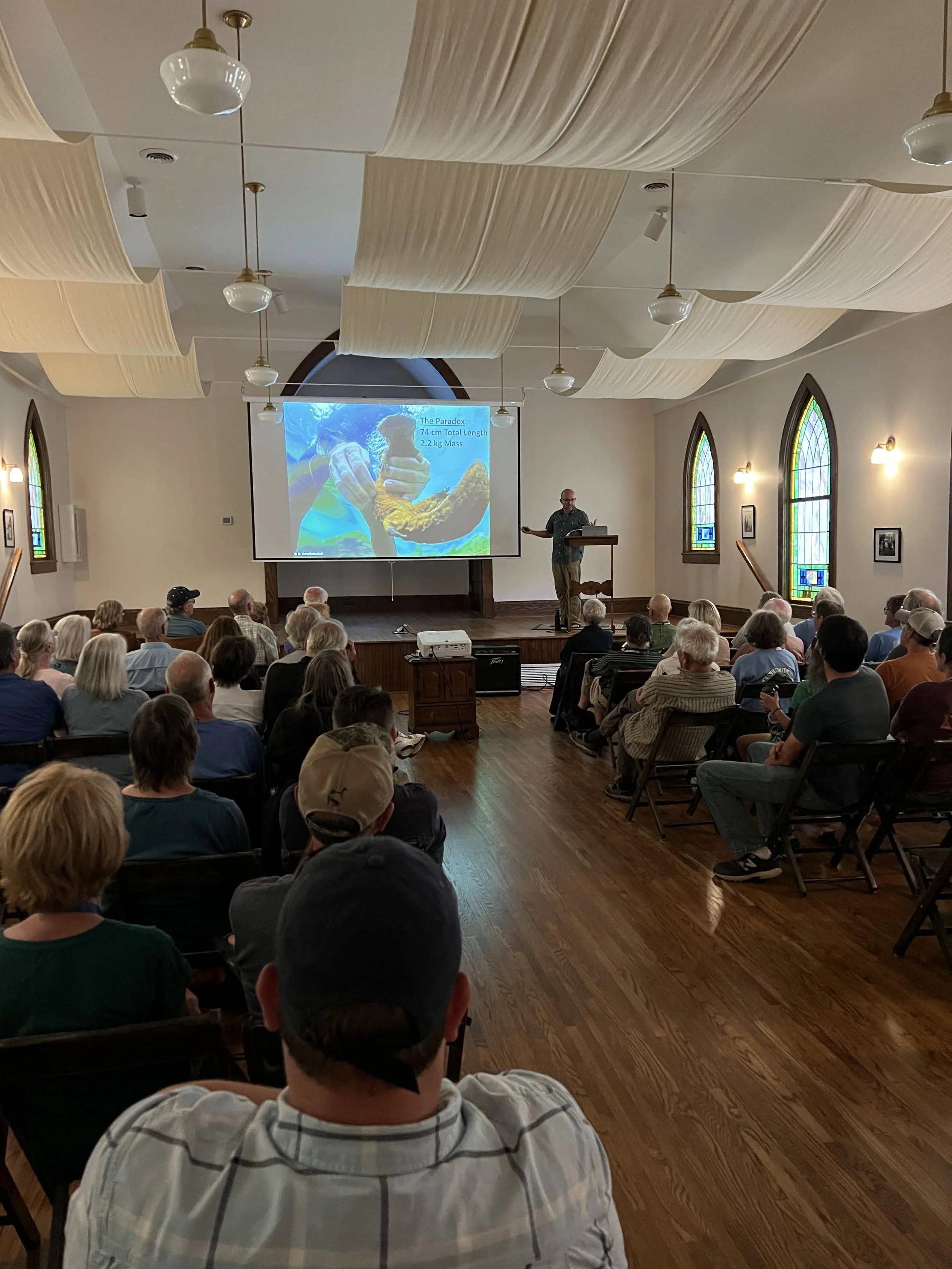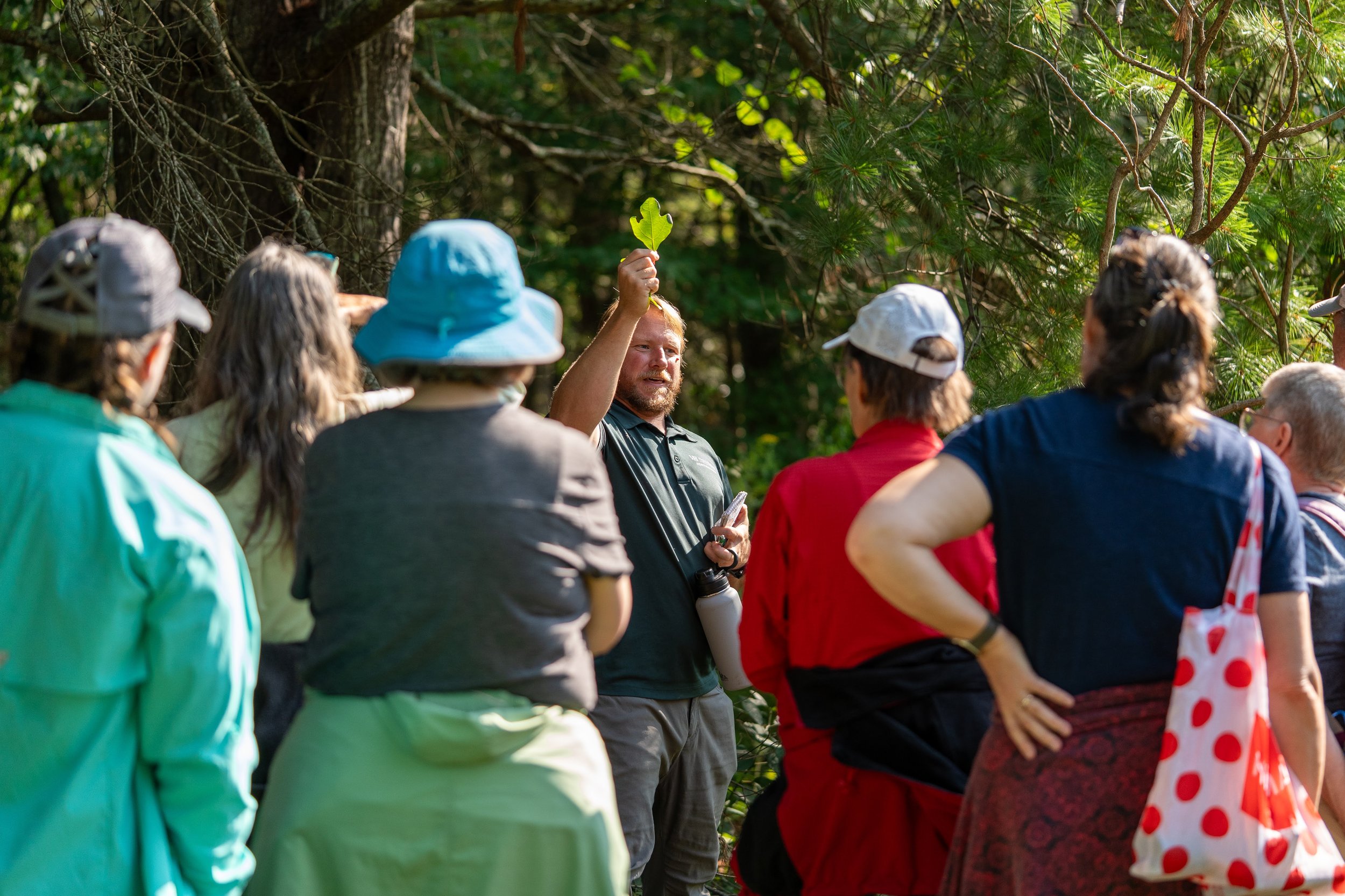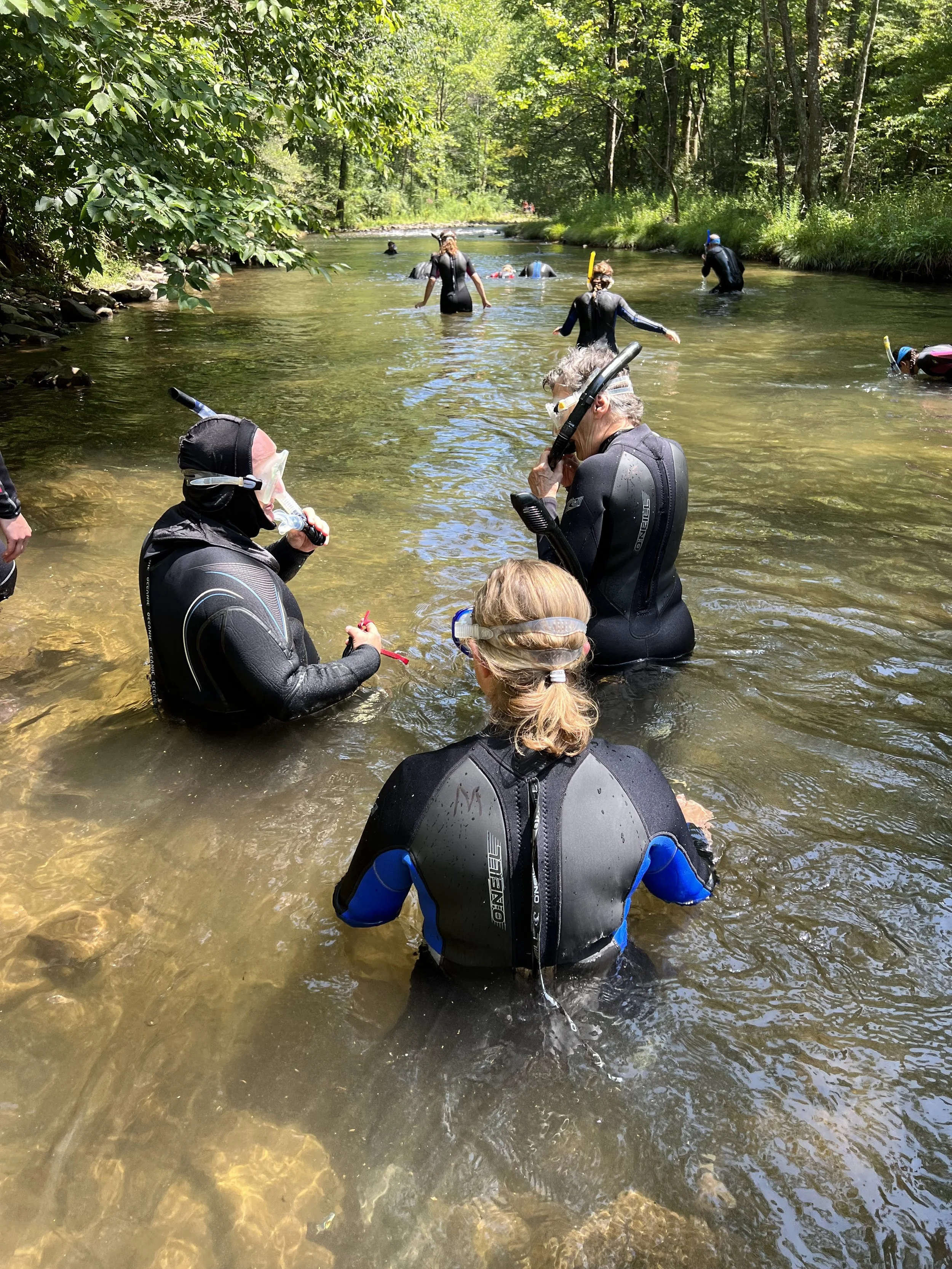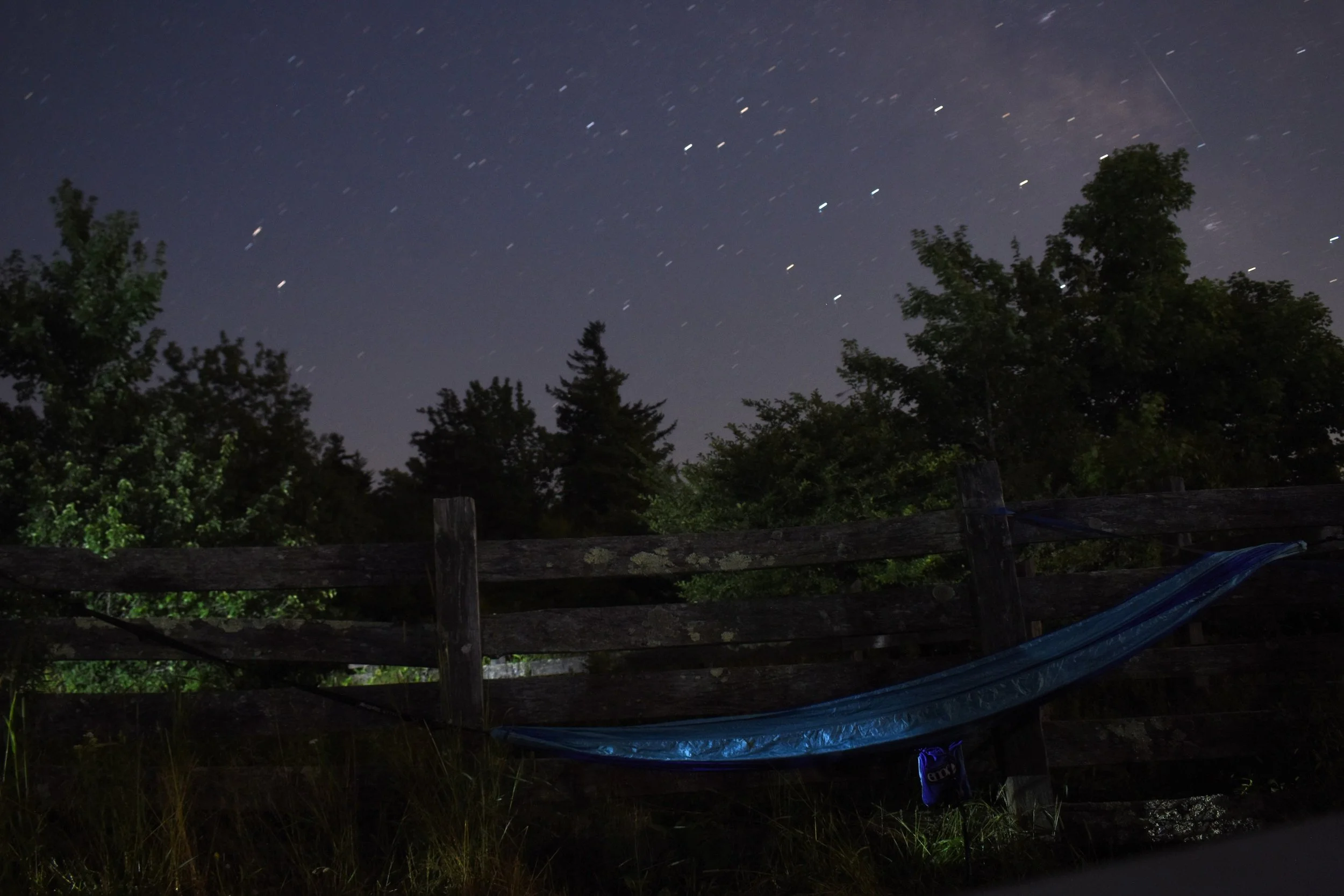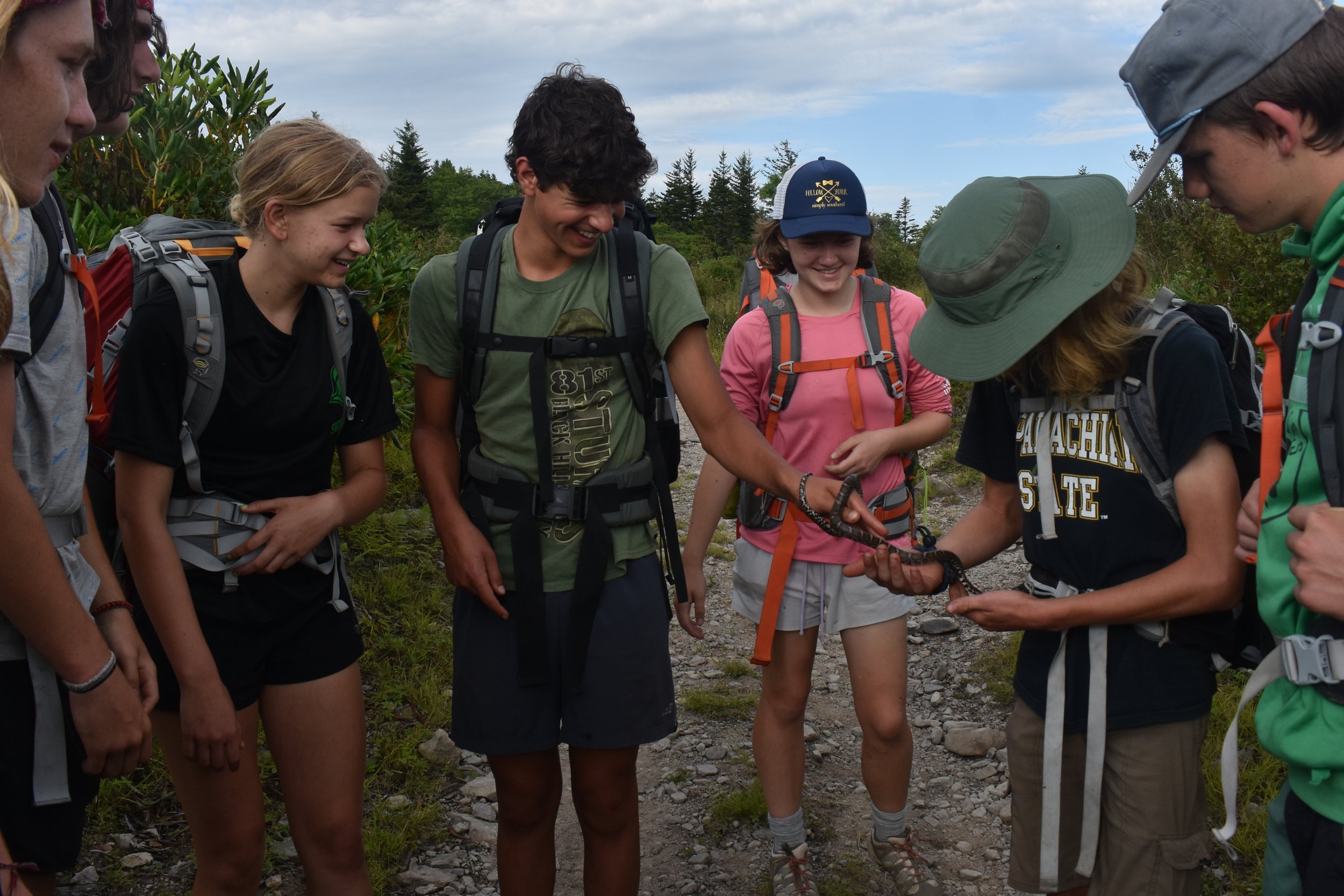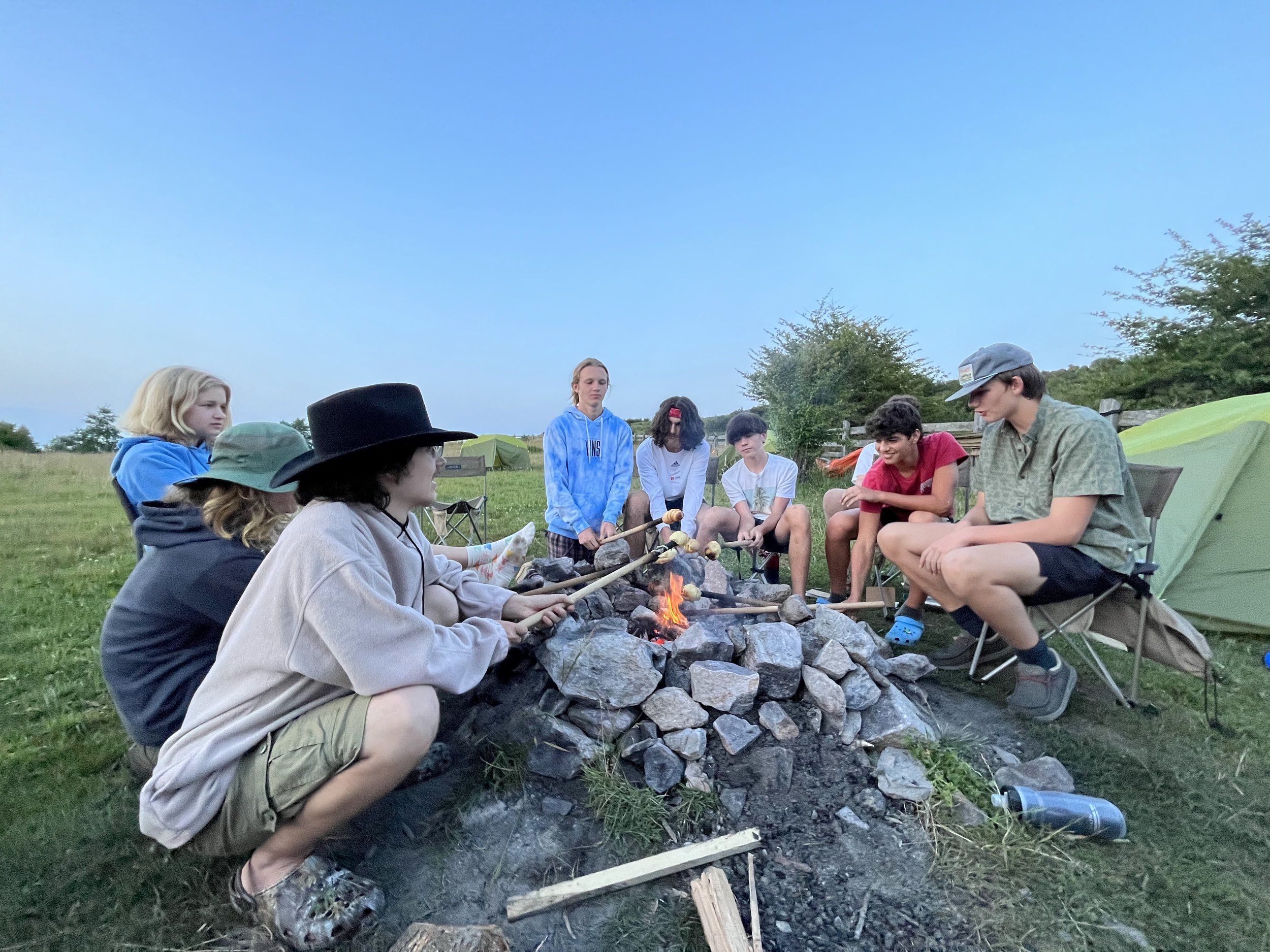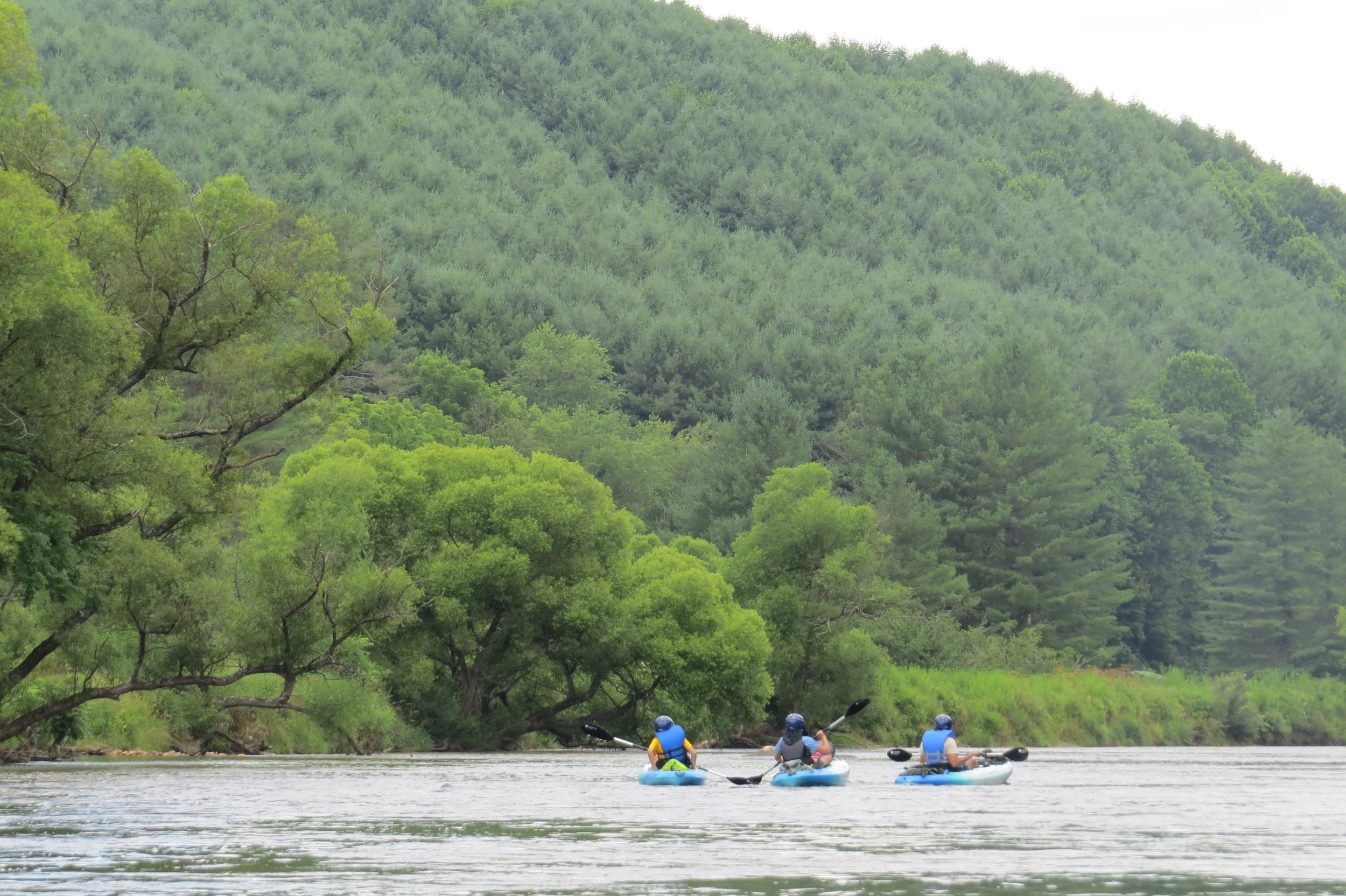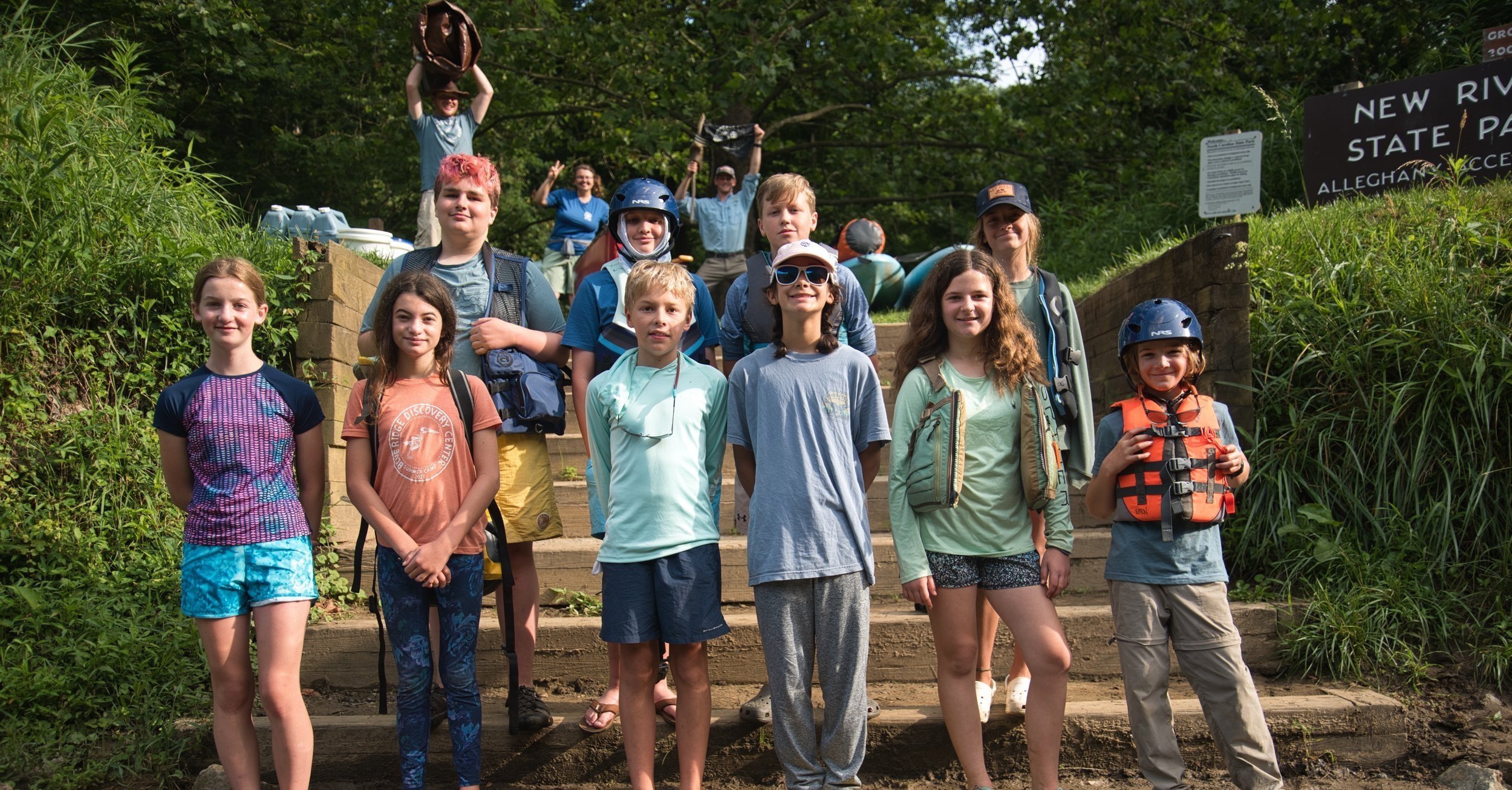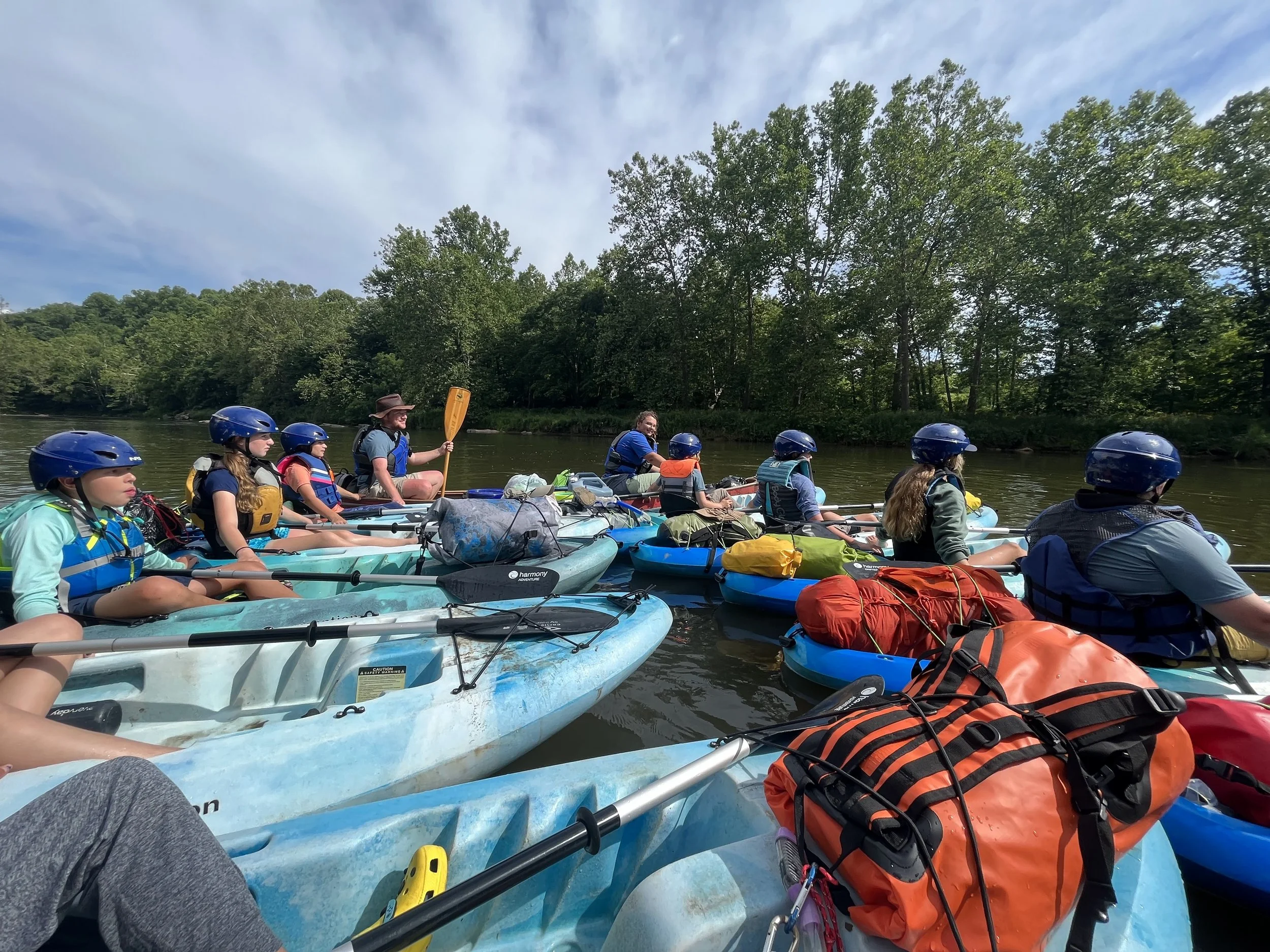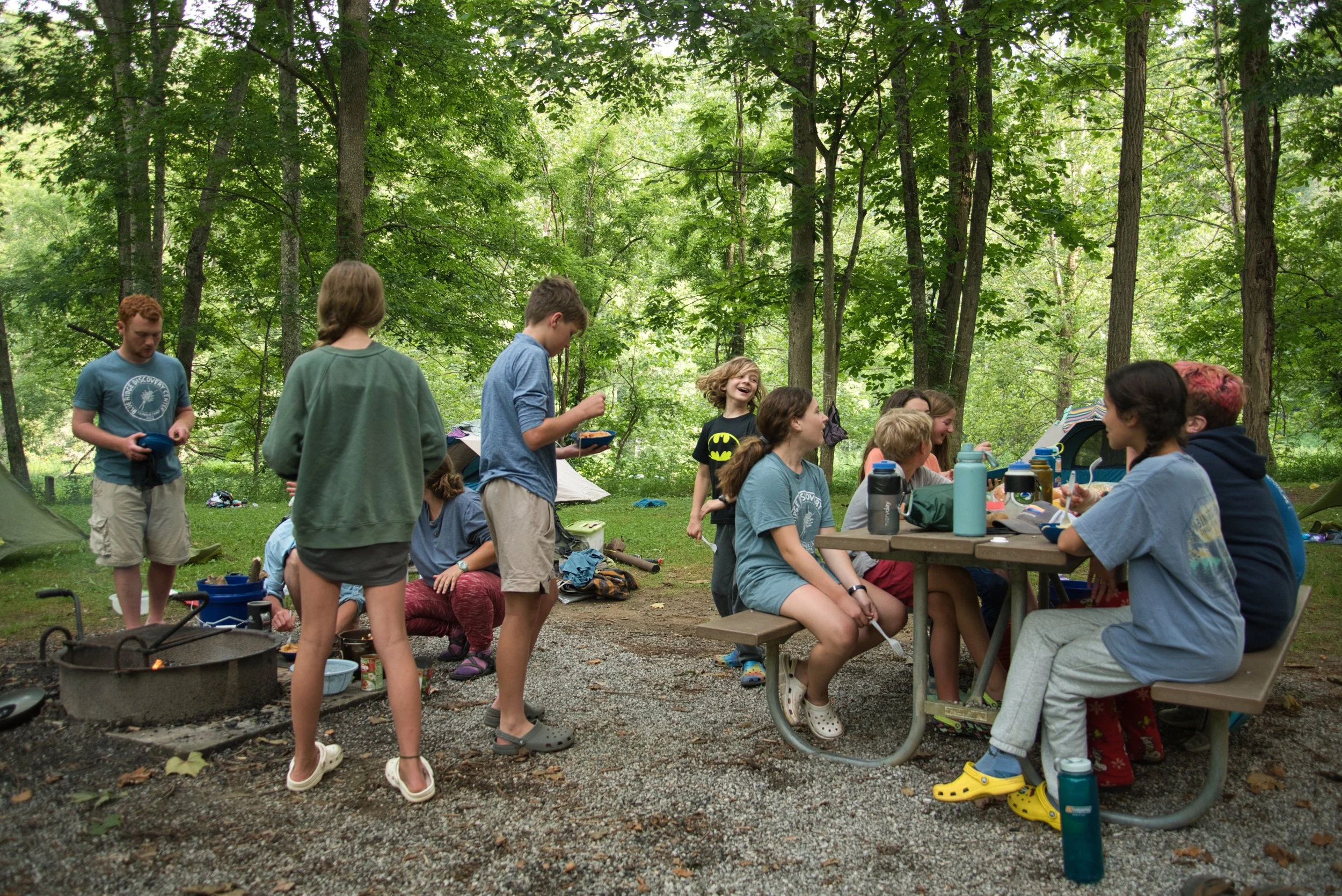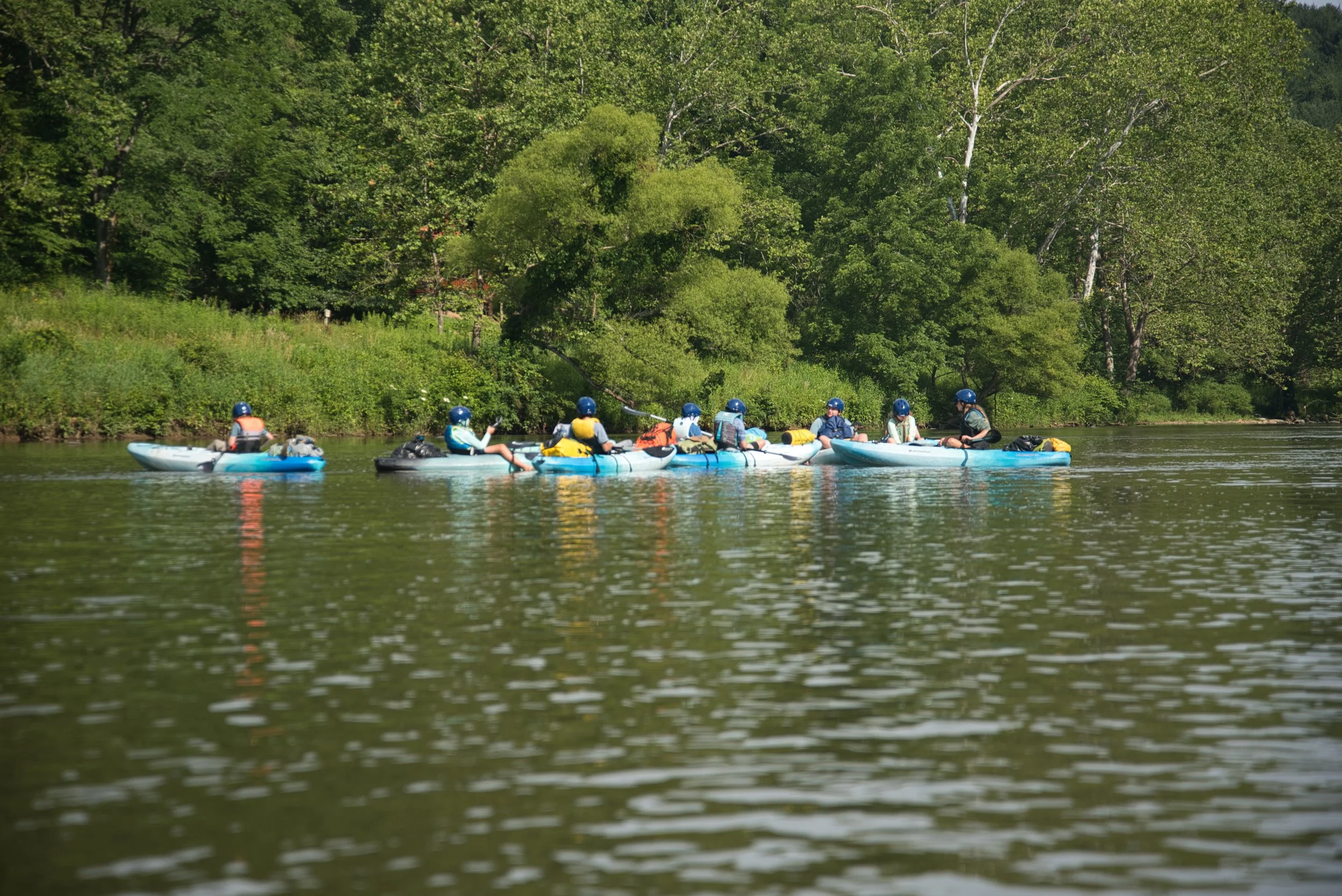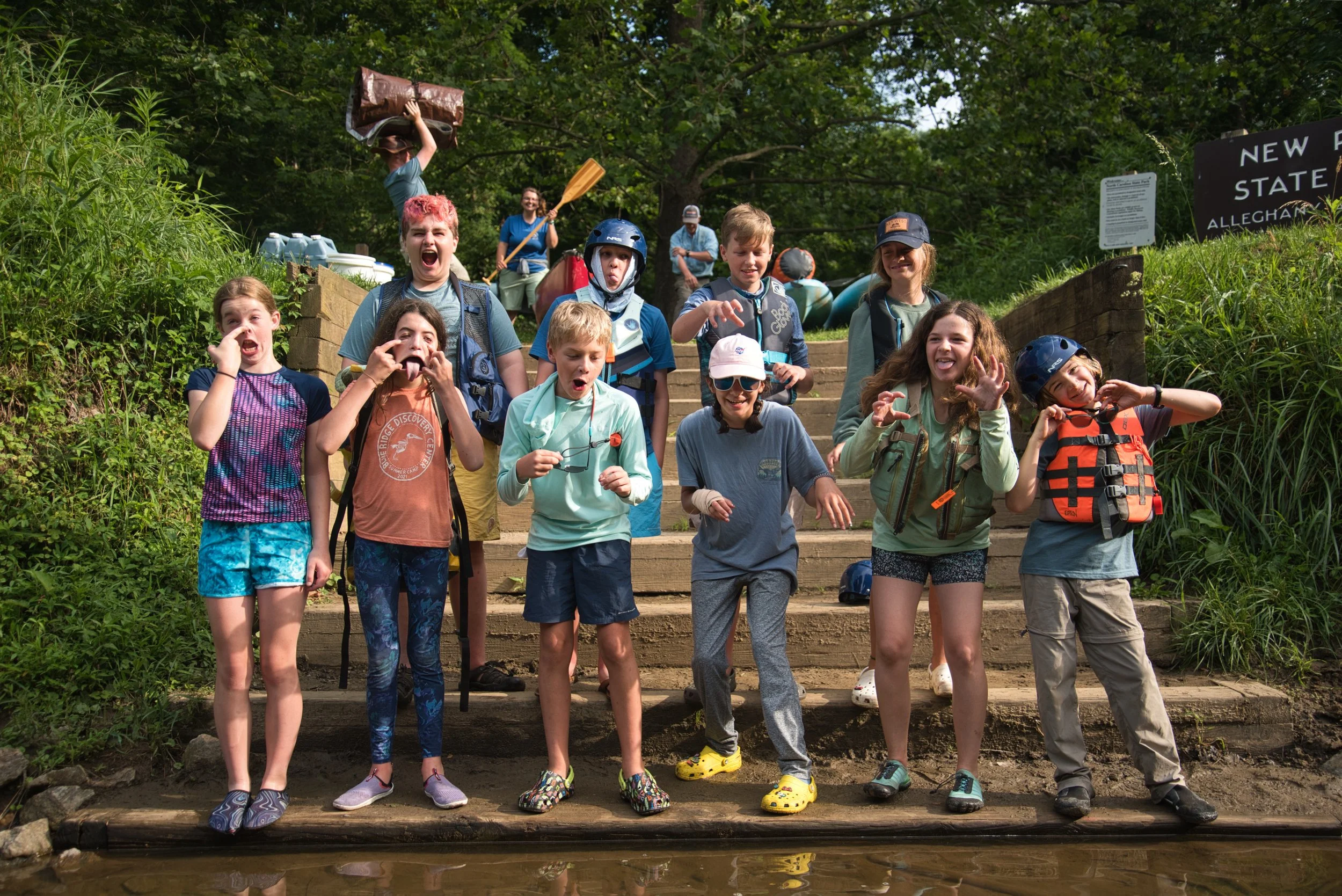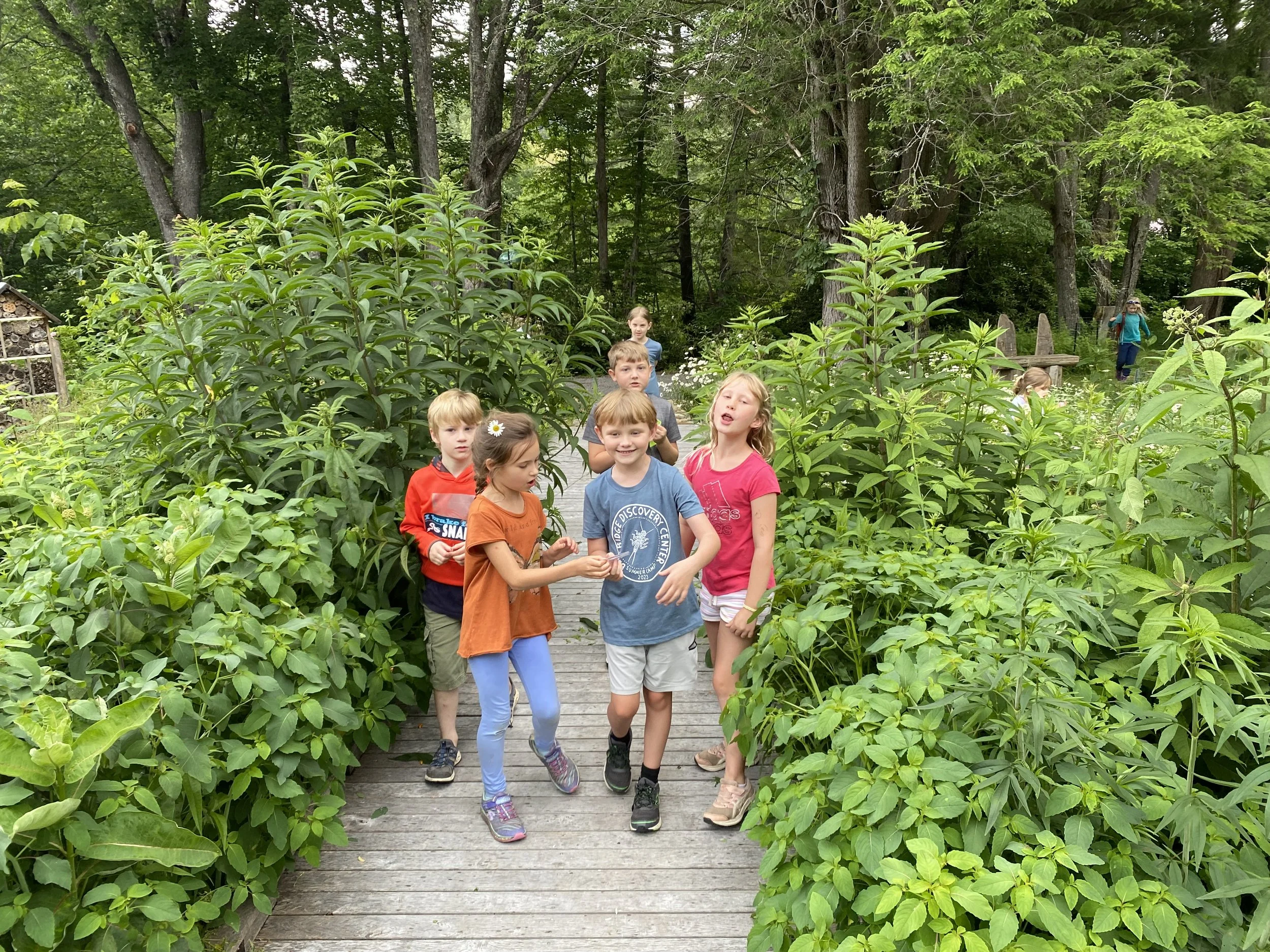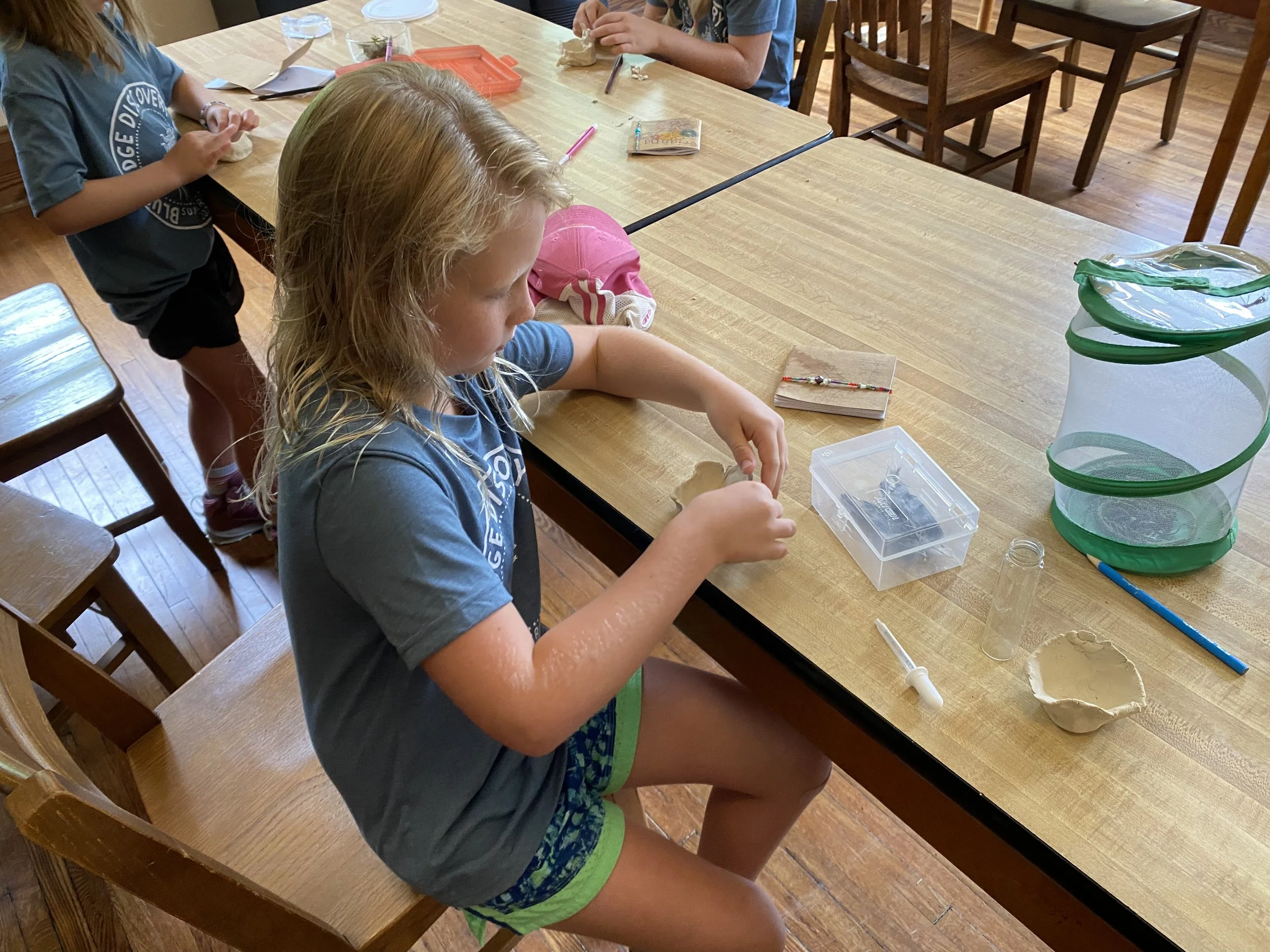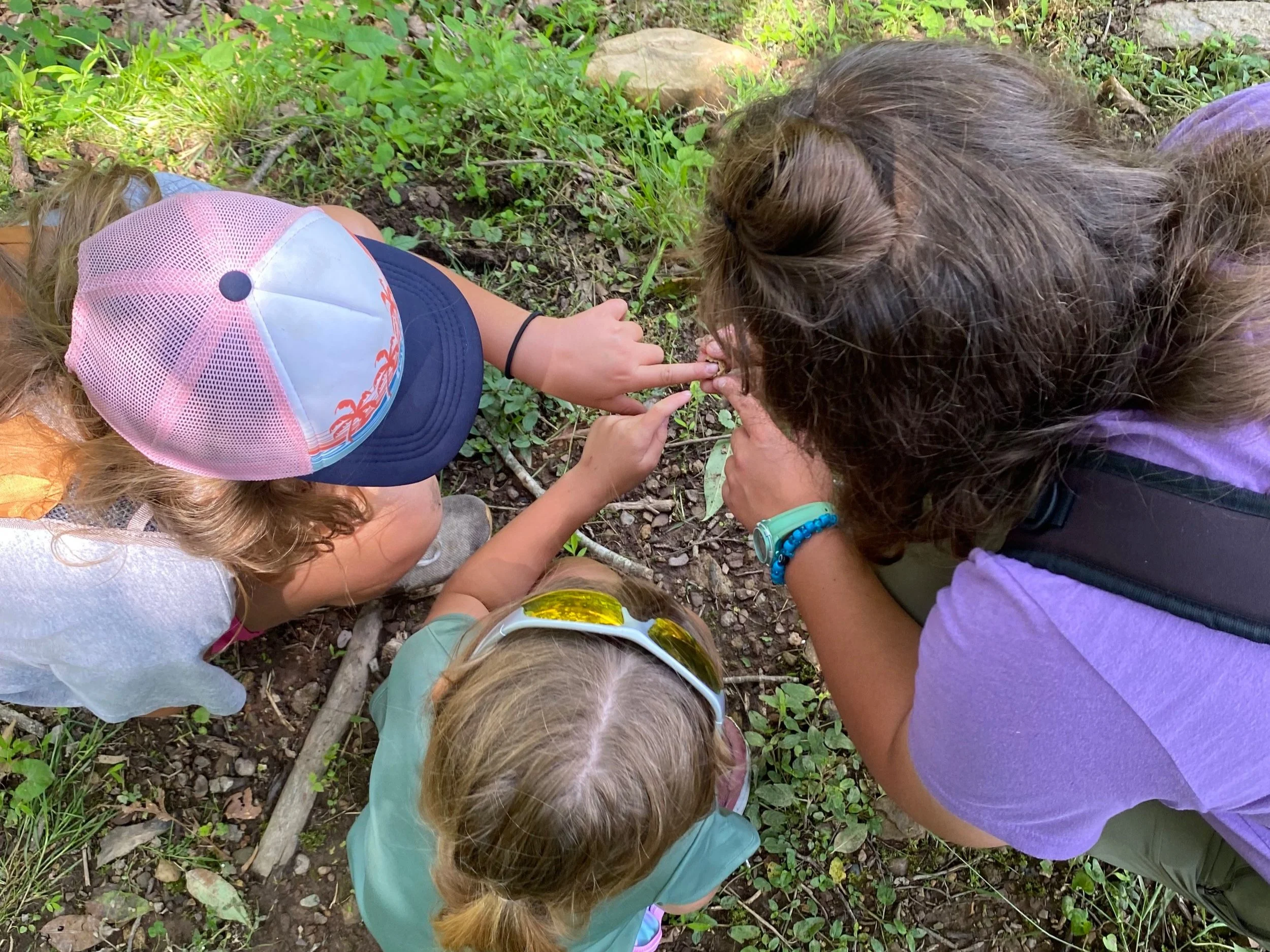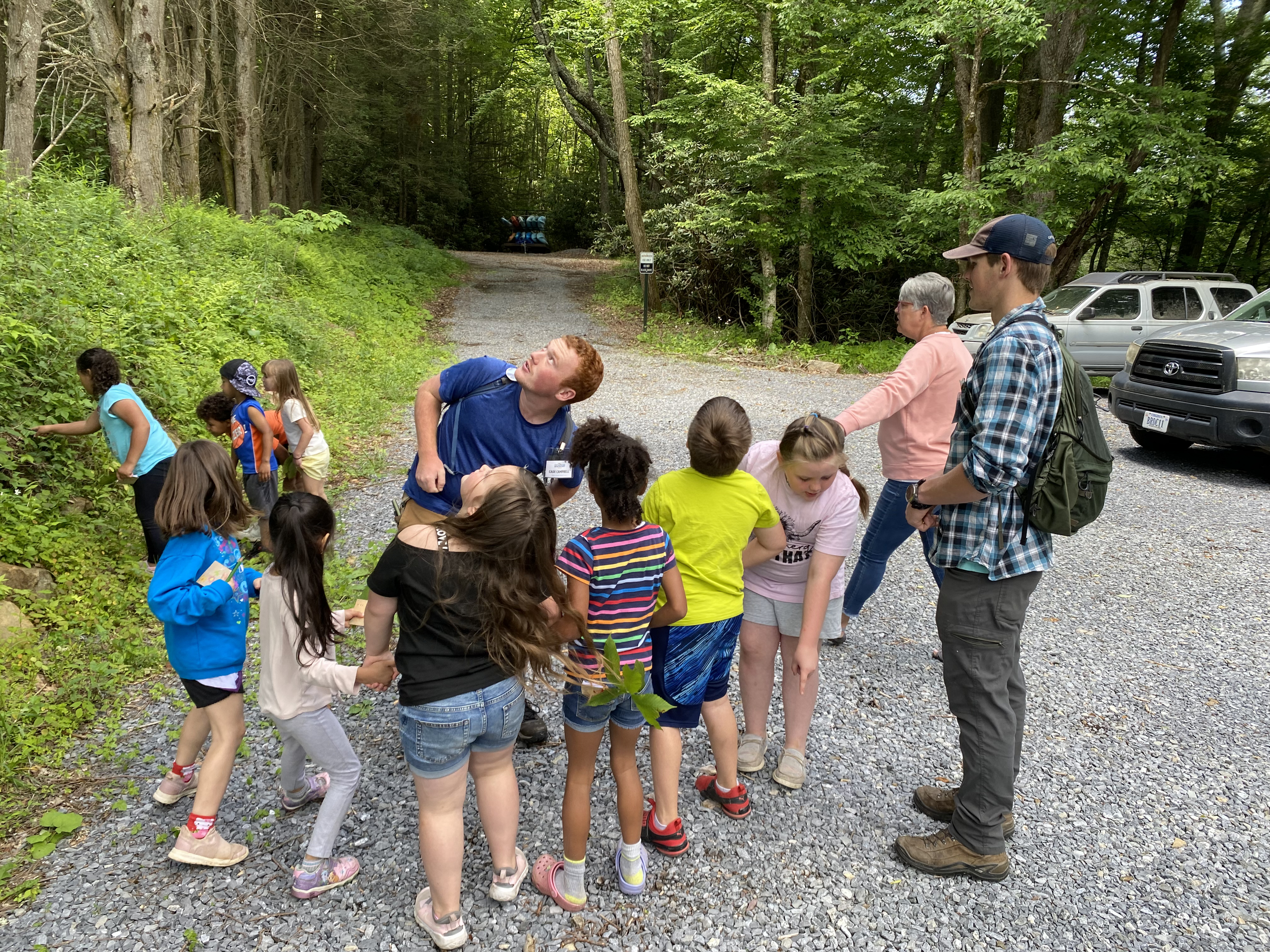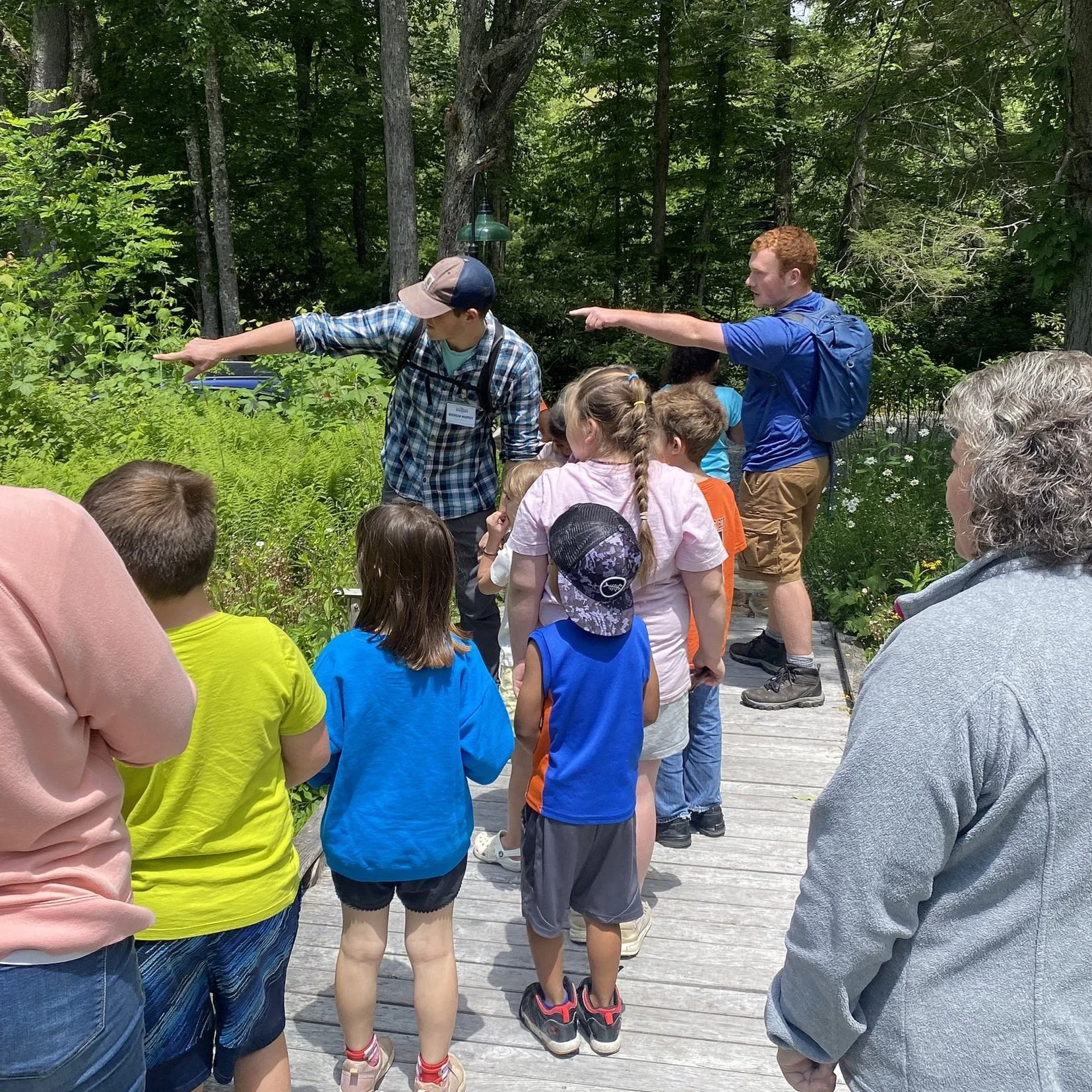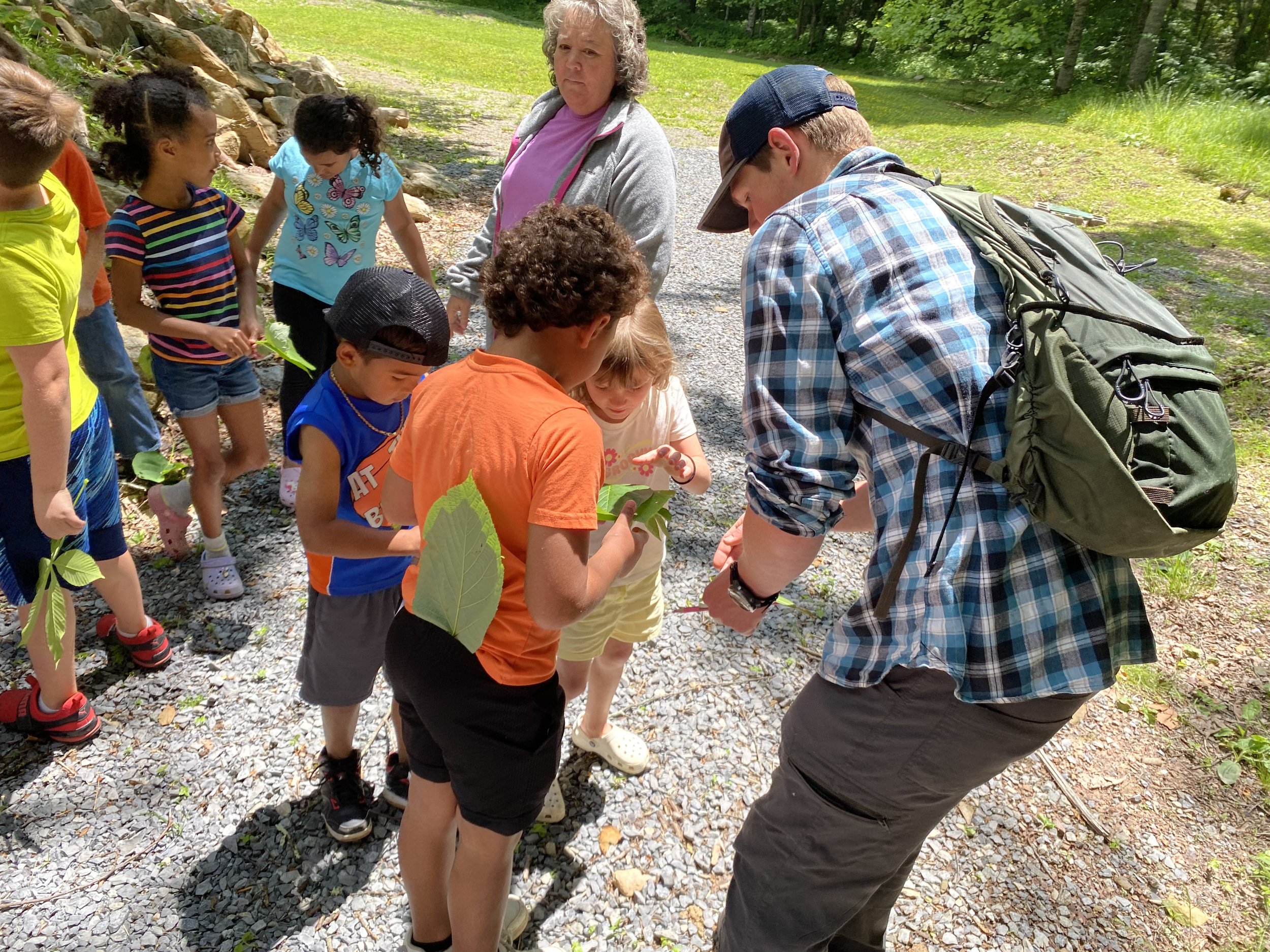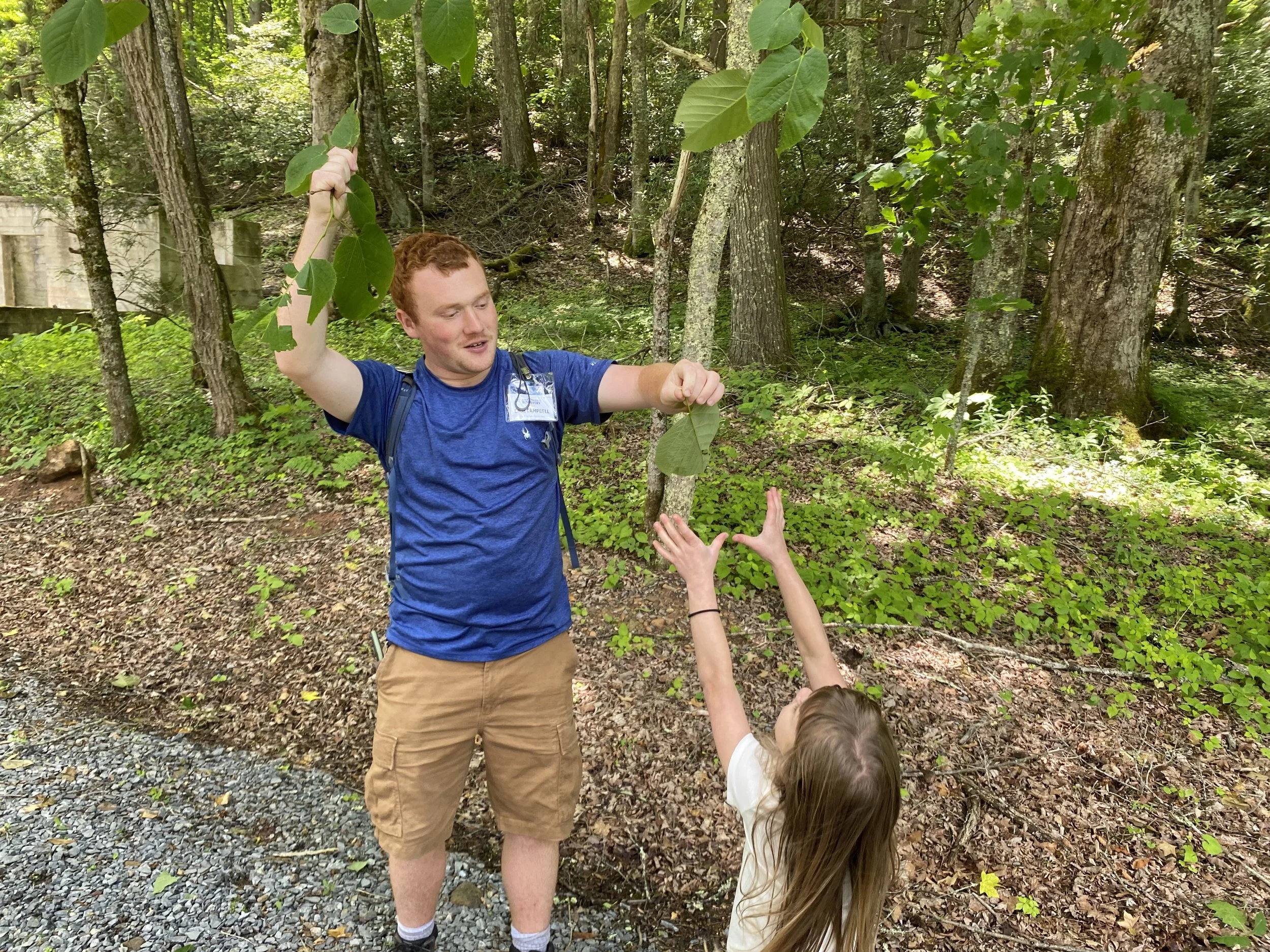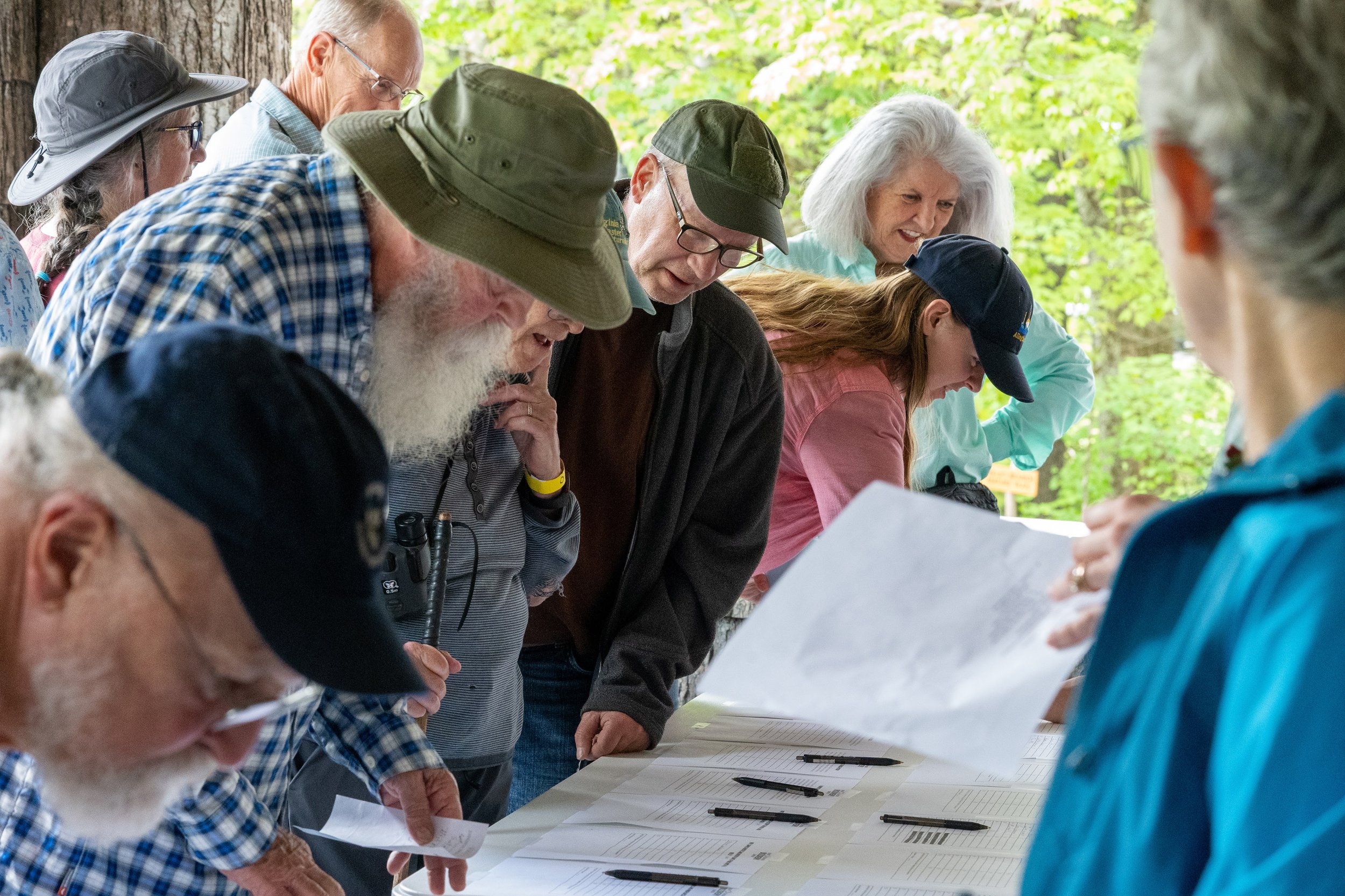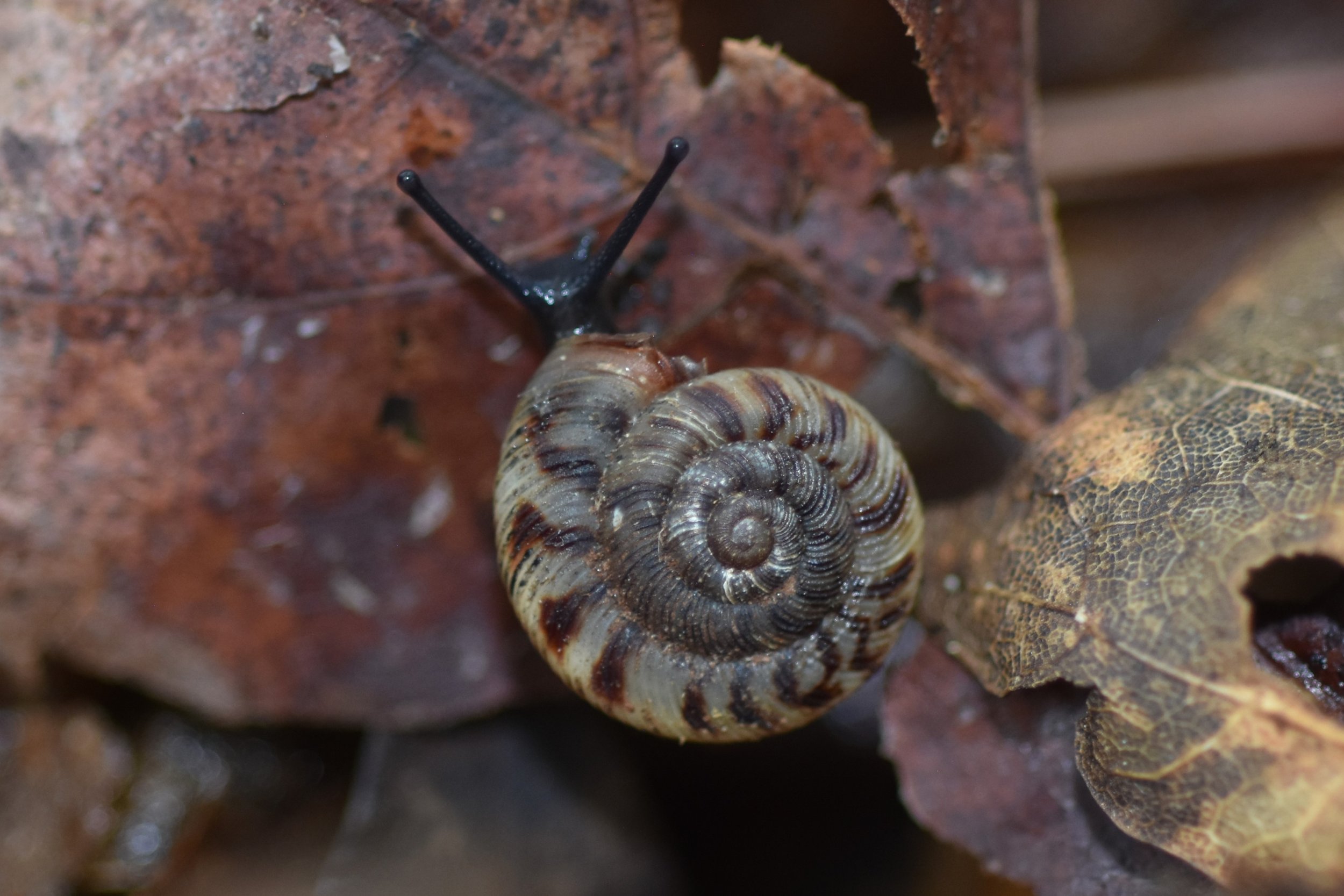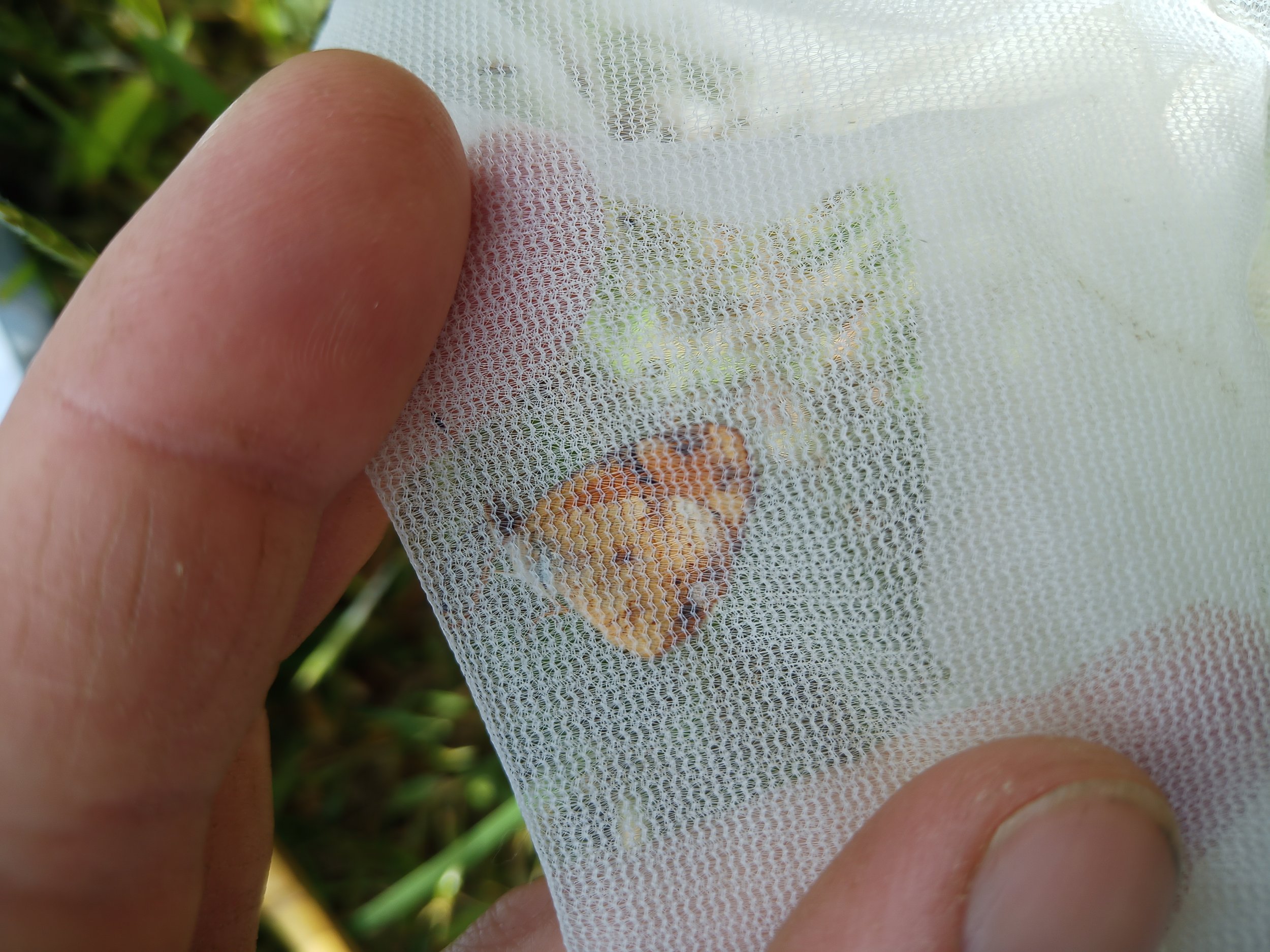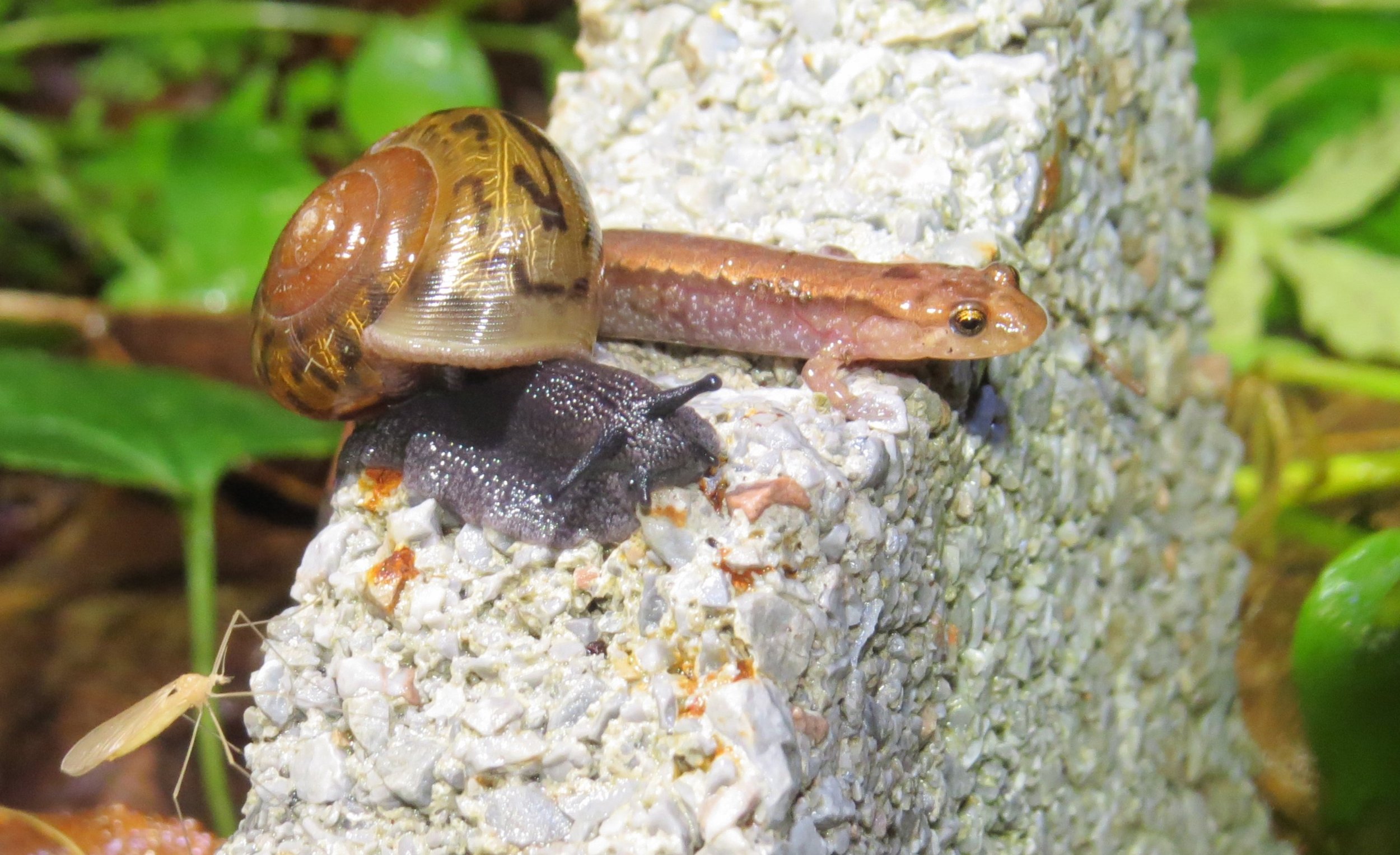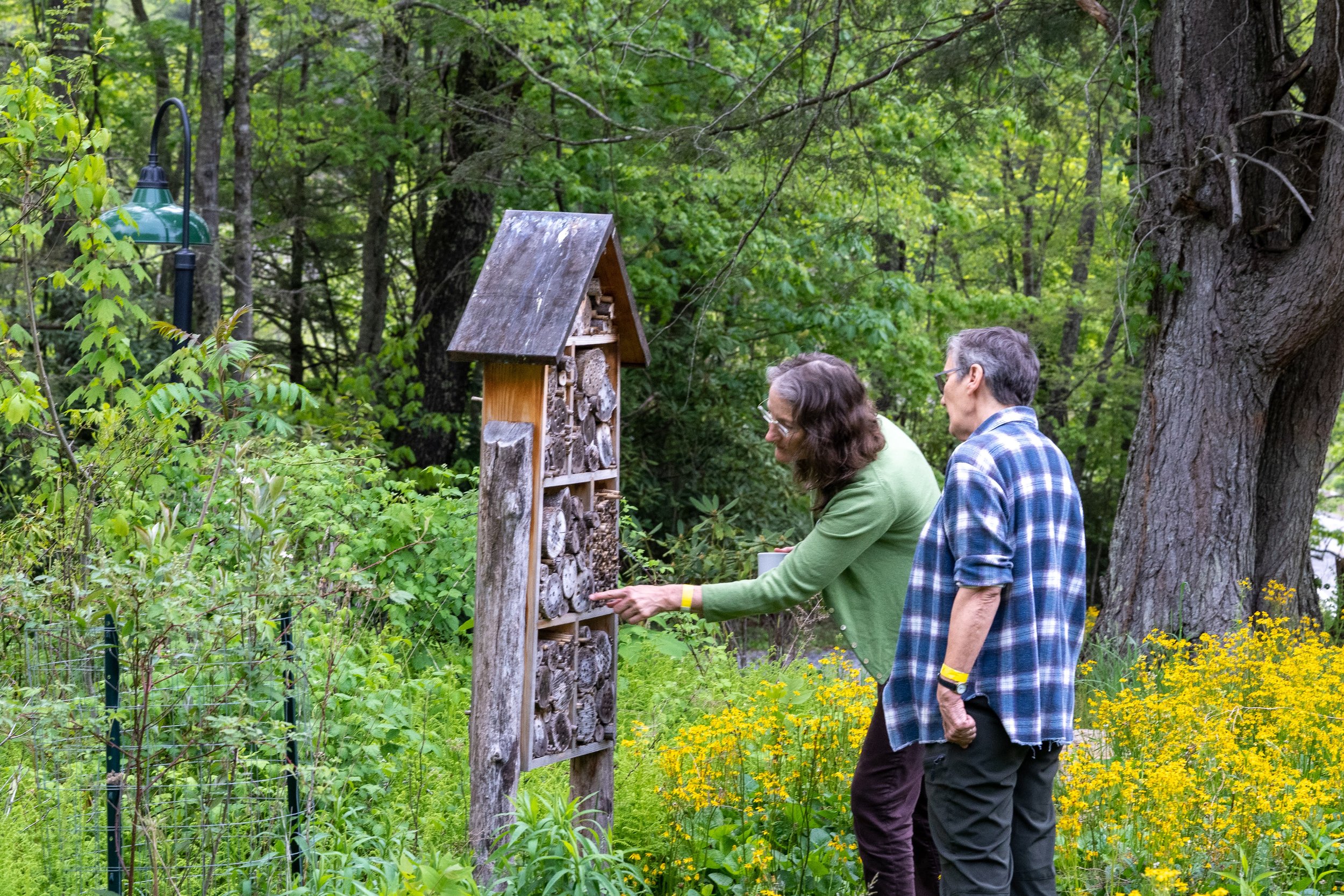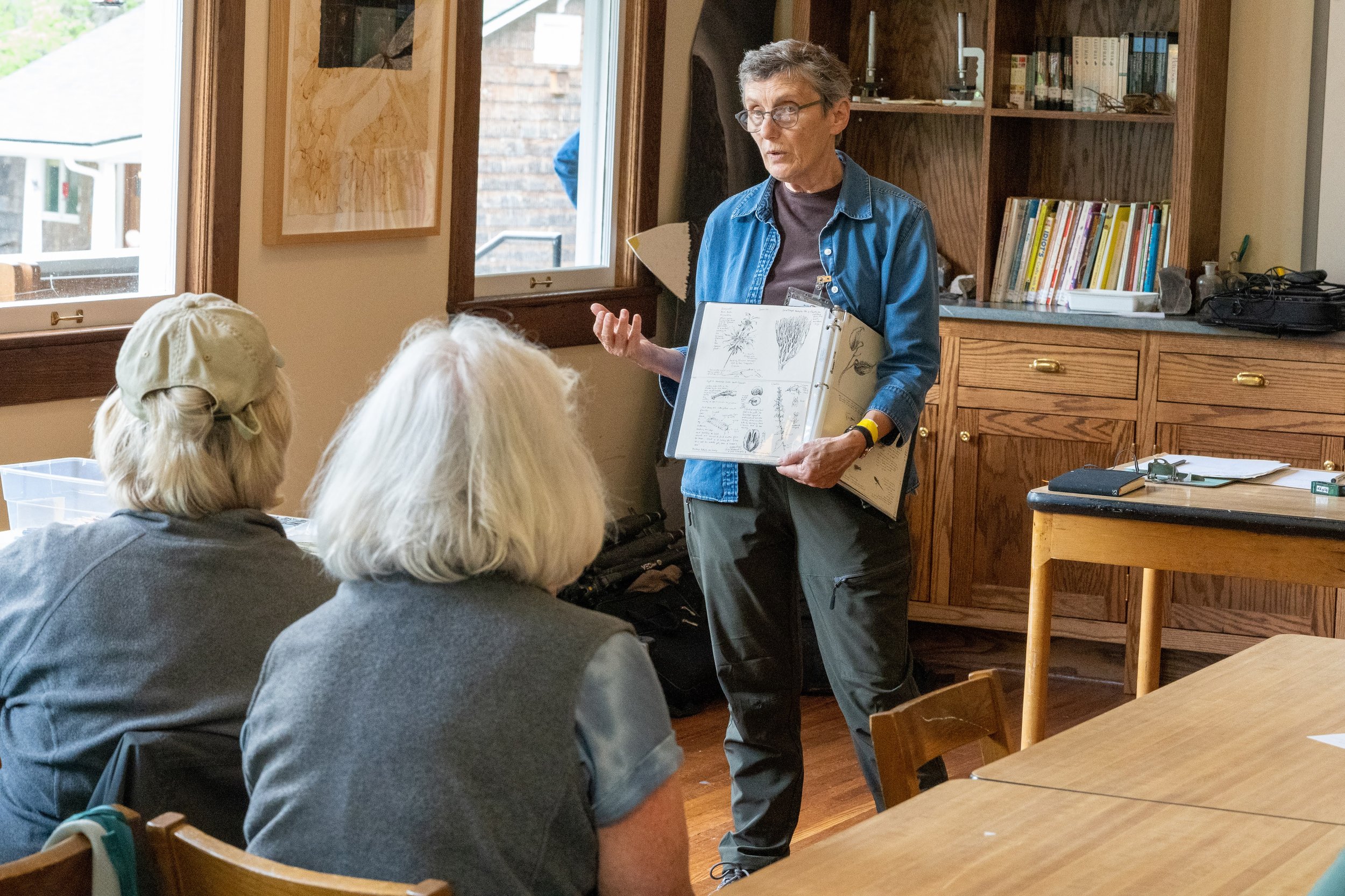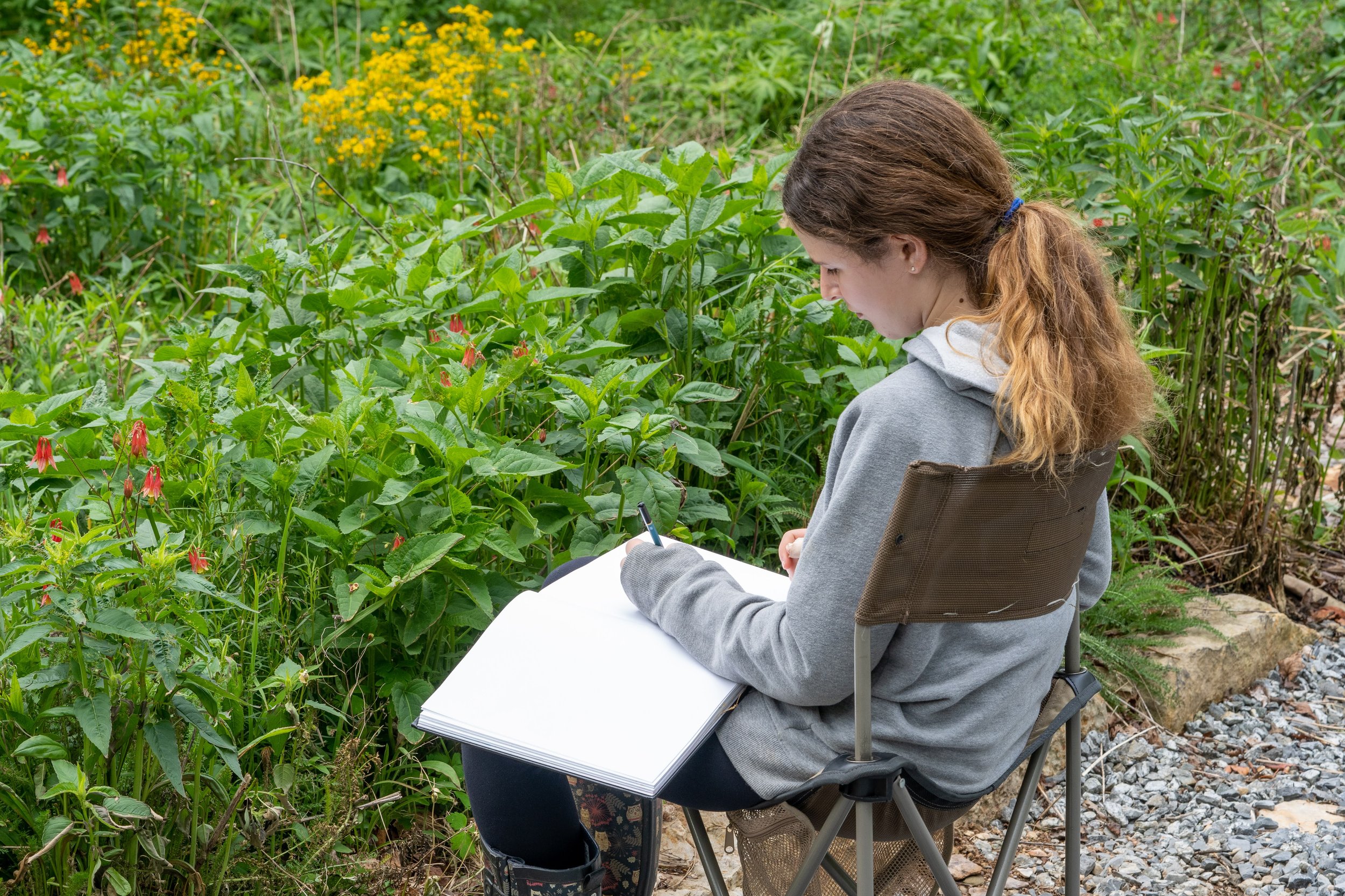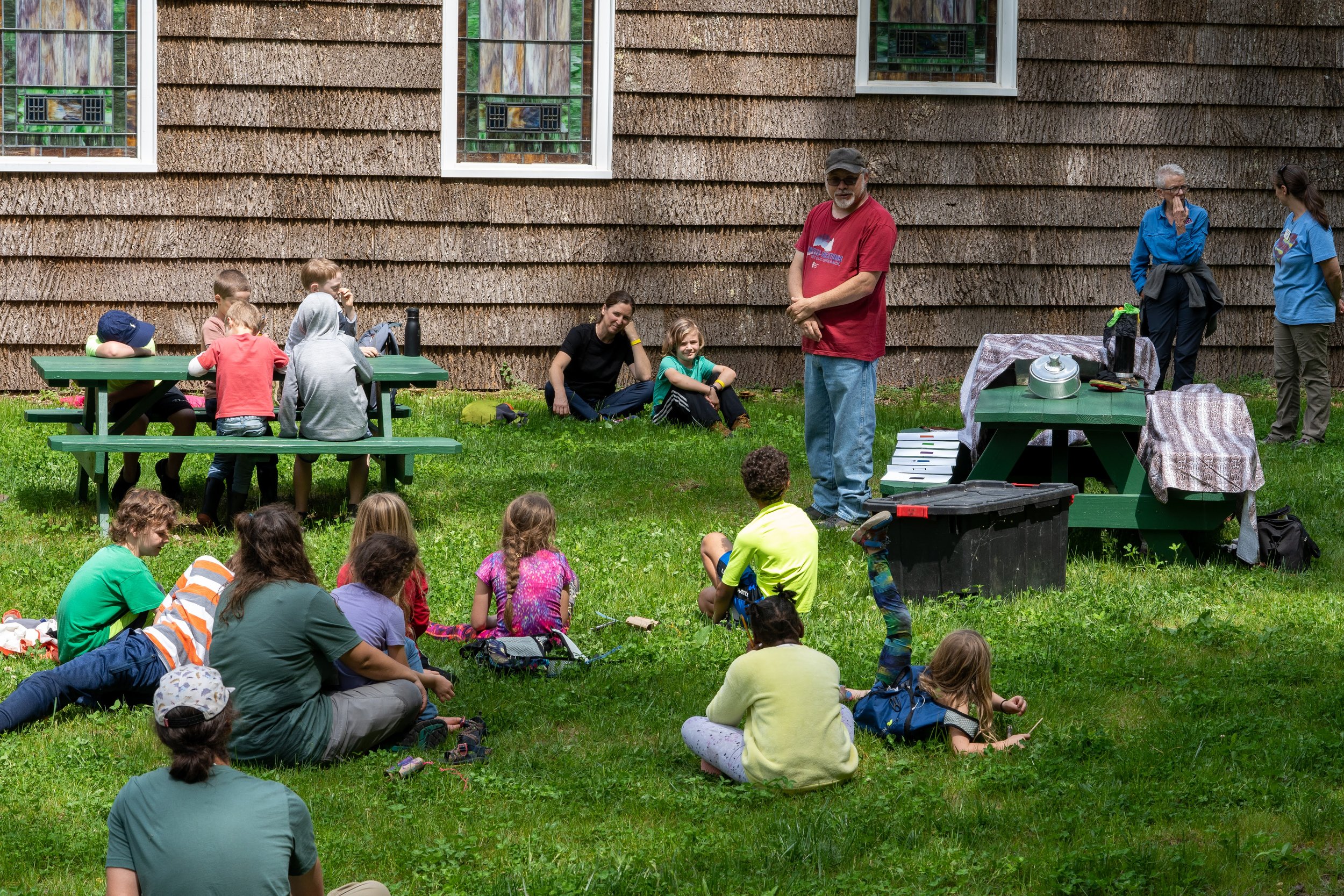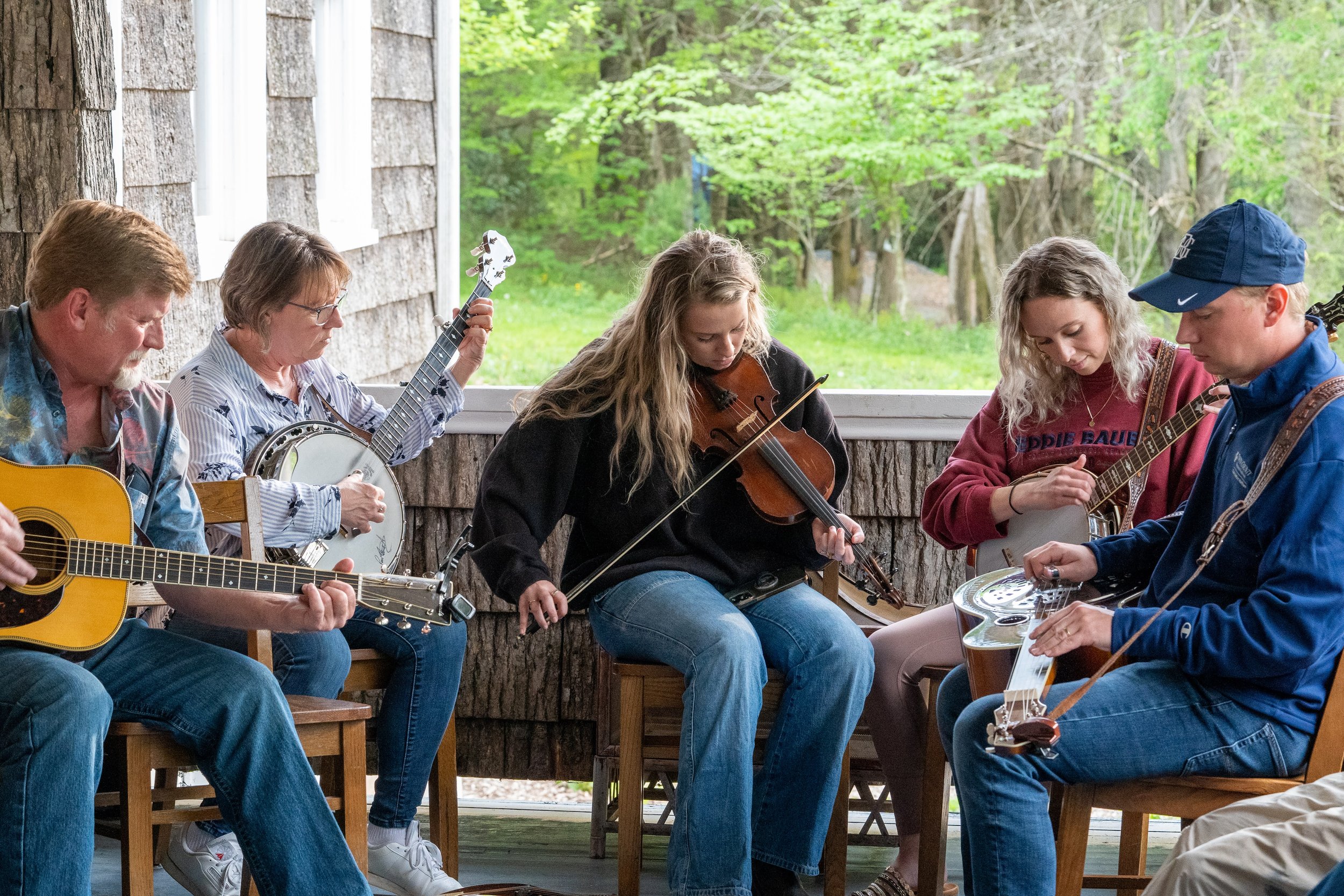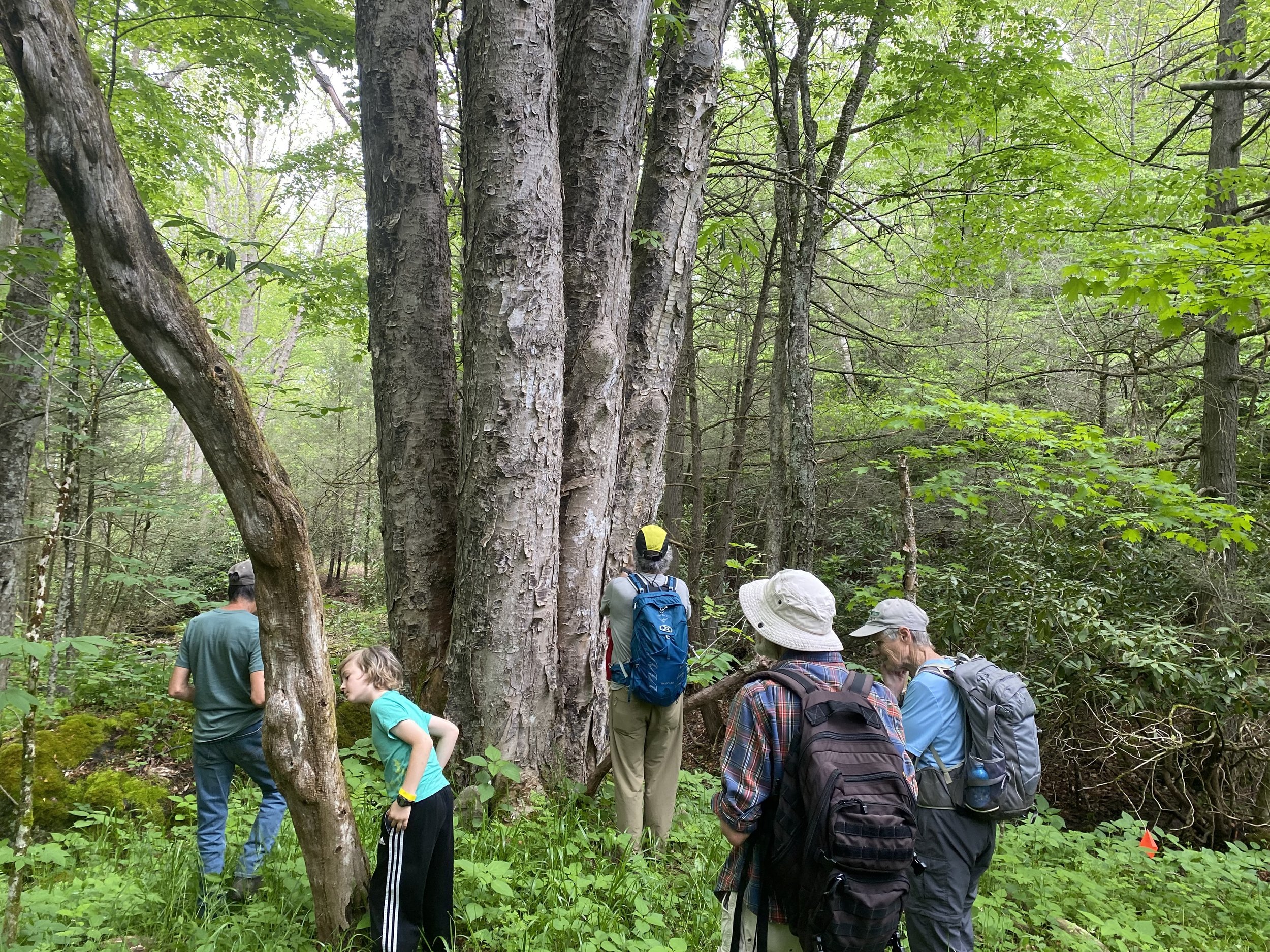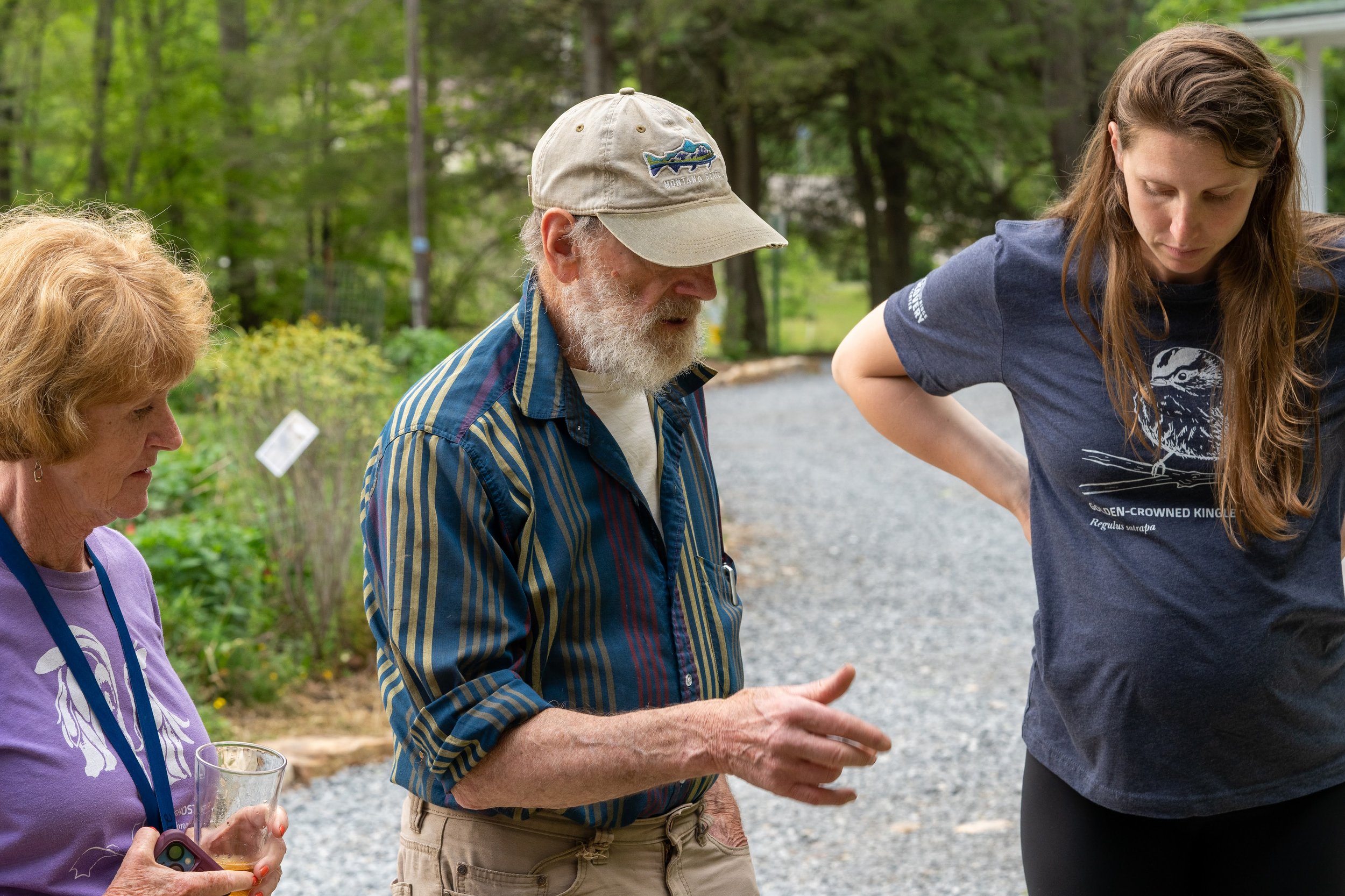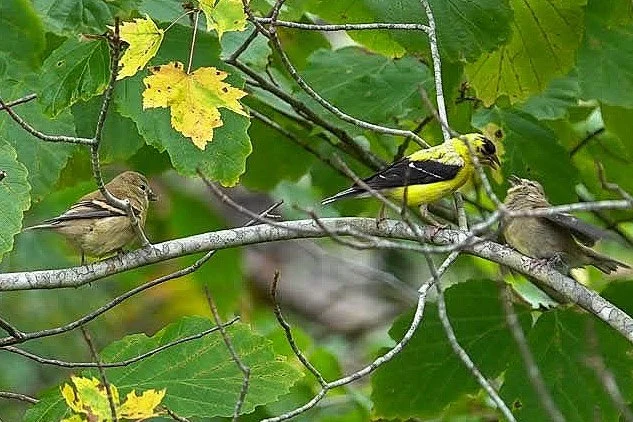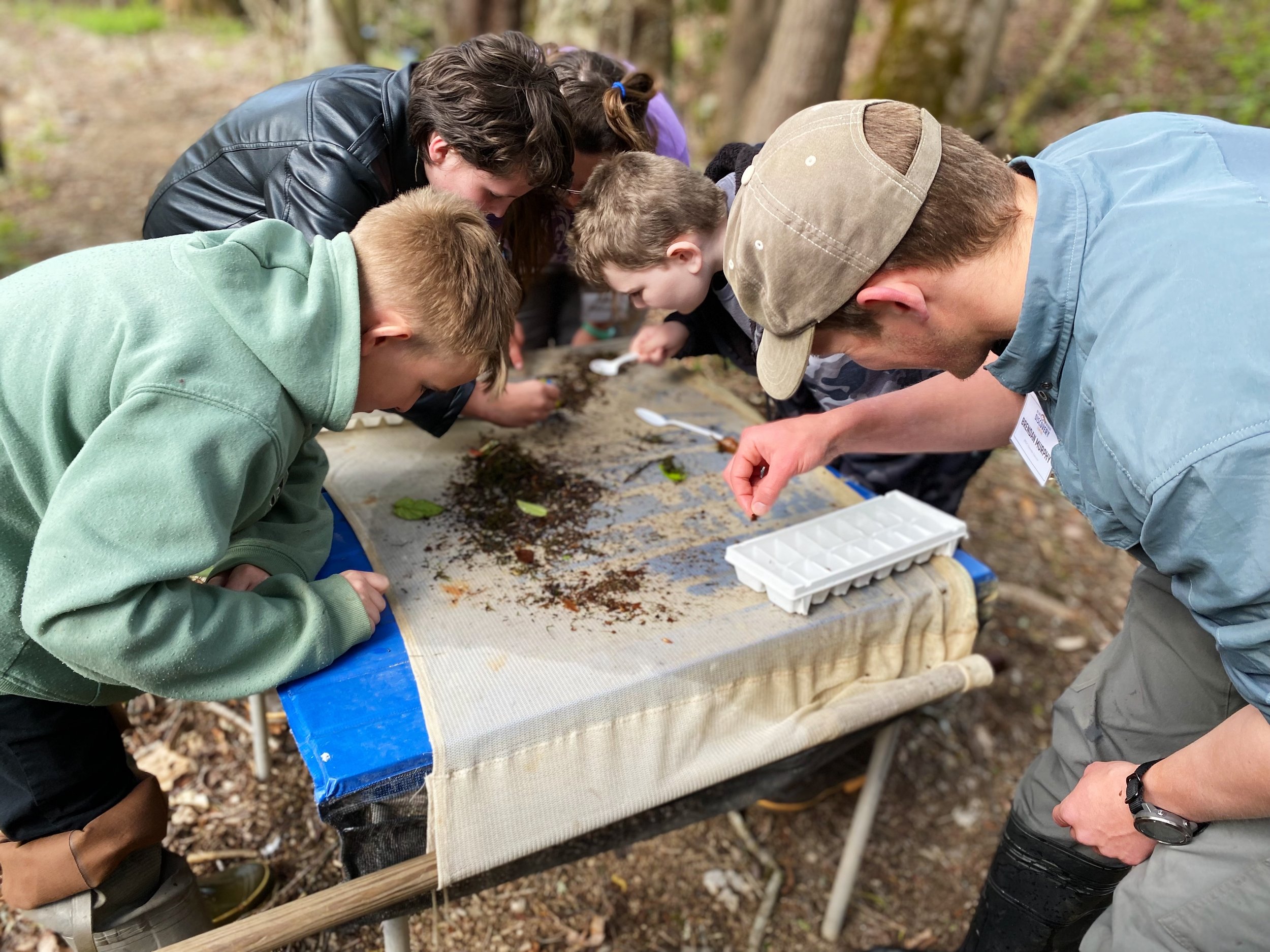
Help Scientists by Collecting Data with the Great Backyard Bird Count
For four days each February, birdwatchers of every skill level can participate in a global event for the love and wellbeing of birds.
The Great Backyard Bird Count ‘24
For four days each February, birdwatchers of every skill level can participate in a global event for the love and wellbeing of birds. On at least one of the four days, participants will spend 15 minutes or more identifying birds in a location of their choice. The birds identified will be submitted to an online database, alongside data from hundreds of thousands of other birders all around the world.
This is a way for anyone with an interest in birds and wildlife to engage with the world around them and learn new things while contributing to a larger collective with the ability to make a positive global impact.
How to Participate
If being a part of this project sounds like a fun way to get outside this February–great! It’s easy:
1. Where/Who/When
This year's bird count runs from Friday, February 16, through Monday, February 19. Pick what spot you’d like to bird, and who you’d like to go with. Local parks, trails, forests, around the neighborhood, and yes, even your own backyard, are all lovely options. You can bird anywhere, as long as you can legally and safely access the property, of course.
2. Watch/Listen/Identify
For at least 15 minutes, at least one time over the course of that Friday-Monday, get out there and observe! Sight and sound are the most helpful cues for bird identification. Helpful tools for bird ID include binoculars, field guides, Merlin Bird ID, and a more experienced birder friend. Be sure to keep careful track of each bird species you see, so that data can be collected!
3. Enter Data
The most crucial step - adding to the international database - can be done in any of three ways:
Enter data through the Merlin Bird ID App
Enter data through a checklist on the eBird App
Enter data on eBird through a compute
If you’re already familiar with eBird and/or Merlin, that’s good news, birder! Any lists added to either over the days of the Great Backyard Bird Count will automatically be a part of the count. So, keep up the good work, and make a point to get outside and do some birding the weekend of the count.
Project Goals
With everyone’s help, we can better understand bird populations. Data on species diversity, population numbers, and location can help ornithologists and land managers to make informed decisions on how to best protect birds and the environment as a whole.
Project History
The Great Backyard Bird Count is a partnership between CornellLab, Audubon, and Birds Canada. Originally founded in 1998 by CornellLab and Audubon, the Great Backyard Bird Count is the first ever community science project launched online, with the purpose of collecting data on wild birds and publicly displaying results. Birds Canada became a part of the collaboration in 2009 to expand the scope of the project in Canada (it was limited to the US when created). In 2013, the Great Backyard Bird Count joined with eBird, the world’s largest ongoing biodiversity related community science project, and became global.
Resources
Visit the Great Backyard Bird Count website to learn more about the project, see photos and data from past years, and for anything else Great Backyard Bird Count related!
Visit eBird to expand your bird knowledge and download a list of target potential species for your area, that you can familiarize yourself with ahead of time.
Data from past counts
We are all in this together.
Migratory birds are a lovely reminder that, across oceans and borders, our planet is one whole. The Great Backyard Bird Count is a testament to our force as a collective. It reassures us with proof that individuals who care to engage and participate in the world around them can come together to make a positive global difference. It reminds us to go outside and be in our world. It encourages us to notice and care for the others we share our planet with. And last but not at all least, it gives us that little extra push to go delight in watching a fluffy little bird hopping around. So get out there and look at some birds!
Excessive Road Salt: AsSALTing Our Streams
Putting down salt on traveling surfaces can help make them safer during treacherous winter conditions. But excessive levels of salt has consequences in our waterways.
Who doesn’t love snow?! It’s fun to play in, pretty to look at, and no day’s better than a snow day. But, when a layer of snow compacts on sidewalks and roads, it can make for some treacherous conditions. Putting down salt on traveling surfaces can help make them safer. When salt dissolves, it lowers the freezing temperature of water. That means the water stays liquid at colder temperatures, and makes ice and snow melt faster without refreezing into a slick sheet of ice, keeping roads and sidewalks safe.
Environmental Impact
But what happens to all that salt when the ice and snow melt away? It gets carried along with that meltwater and ends up in our streams. Freshwater animals and plants can’t survive in high salinity water. Even if average levels remain safe, sudden spikes in salinity are especially harmful to the animals that live in streams. On warm days, lots of snowmelt can carry a load of road salt into streams all at once, resulting in spikes that can reach toxic levels. While some of our fish, including trout, have migrated downstream to larger waterways during the winter, smaller fish including sculpins and daces, as well as sensitive aquatic insects like mayflies, stoneflies, and caddisflies live in these streams through winter. Furthermore, salt can concentrate in the larger rivers downstream that are fed by several contaminated tributaries.
Infrastructural Impact
In addition to causing environmental damage, road salt also degrades infrastructure. Gritty salt wears away at paved surfaces, and fine or dissolved salt can corrode metal and cement. This includes roads and sidewalks, guard rails, and vehicles themselves. Here in the Blue Ridge mountains, many municipalities source water from rivers or shallow wells. When road salt contaminates these water sources, it can damage filters and corrode pipes.
Taking Action
If road salt is so bad, what can we do about it? Alternatives to road salt are considered in some areas. Sand and gravel can help increase traction on roads, but they don’t actually melt away ice. Plus, with sand and gravel, the sediment left behind can still damage paved surfaces and lead to sedimentation in streams.
Road salt is a powerful tool. When used wisely, damage to ecosystems and infrastructure can be greatly reduced. It only takes 12 oz. (that’s a cup and a half) to effectively treat 20 feet of road. Using more doesn’t make the snow melt significantly faster, but it does contribute to more contaminated runoff. Plowing roads regularly and salting roads less frequently can greatly reduce the amount of salt necessary to make roads safe.
This winter, you can help protect our streams by being more aware of local salt use. Keep an eye out for spilled piles of road salt or uncovered salt stockpiles. These can be reported to VDOT and the DEQ. Pay attention to salting practices, and if you feel your area is oversalting roads, say something! By showing property managers, community leaders, and local government representatives that you care, you can help change winter road treatment practices.
You can also make a huge difference in your neighborhood. If you are able, try to keep up with the snowfall and shovel it from traveling surfaces before it builds up. Read the instructions on road salt bags, and calculate how much salt you actually need to use to treat your driveway and walkways. By using the right amount, you can help protect streams and your wallet. Offer to help neighbors, and talk to them about the importance of reducing salt use. If you have a lot of surface to plow, perhaps consider an electric snow blower- you could share the cost with neighbors!
More Information: Salt Watch
If you are interested in learning more, the Izaak Walton League of America has a program called Salt Watch. They provide some great resources on their website including articles about the damages and benefits of using road salt and how to responsibly use it; templates for educational yard signs, pamphlets, and letters to public officials; an interactive map showing stream salinity data from the last 6 winters; and links to other resources. You can even sign up to help monitor road salt runoff! They offer free salinity test kits so you can test your local stream, and report your findings to them. This data can help officials make more informed decisions in regions that are highly impacted by saline runoff.
Join us at the Mount Rogers Winter Naturalist Rally!
Embark on an journey of discovery with us! Blue Ridge Discovery Center proudly presents the Mount Rogers Winter Naturalist Rally. This annual event, upcoming on Saturday, February 17, 2024, is a celebration of the region's diverse ecosystems and a testament to the wonders that winter unveils in the Appalachians.
Embark on an journey of discovery with us! Blue Ridge Discovery Center proudly presents the Mount Rogers Winter Naturalist Rally. This annual event, upcoming on Saturday, February 17, 2024, is a celebration of the region's diverse ecosystems and a testament to the wonders that winter unveils in the Appalachians.
A Day of SHaring discovery
A chilly wood frog (Lithobates sylvaticus) encourages you to attend the Winter Rally. Wood frogs have impressive and unusual winter adaptations, with a compound similar to those used in commercial anti-freeze found in their blood.
Dive into an experience like no other, where nature enthusiasts, from inquisitive amateurs to accomplished naturalists, come together to explore, share, and discover. The rally serves as a platform for fostering a deeper understanding of the rich biodiversity of the Blue Ridge region, offering a customizable array of field trips, presentations, and hands-on activities.
The day kicks off at 8:00 am with registration and trip selection, followed by a scrumptious breakfast (pre-registration required) served with piping hot coffee. After breakfast, the entire rally will gather for the featured speaker at 9:00 am, an expert ready to share profound insights into the beauty and mysteries of nature.
Diverse Field Trips and Programs
The heart of the rally lies in its diverse offerings of field trips and programs led by seasoned naturalists.
Morning Session (10:00 am - 12:00 pm):
Tracks and Signs with Cade Campbell
An Oral History of Konnarock with Dr. Edward Davis
Winter Waterfowl Trip
BRDC Habitats with Ali Reilly
Afternoon Session 1 (1:00 pm - 3:00 pm):
Introduction to Growing Your Own Native Plants with Ian Caton
Forest Pests with Liv Andrews
Glaciers in the Blue Ridge with Arthur Merschat
Nature Sketching with Josh Ward
Weather Survival in the Wilderness with Dr. Doug Miller
Afternoon Session 2 (3:00 pm - 5:00 pm):
High Elevation Dormant Trees with Jordon Blevins
Crafting Indigenous Snow Goggles with Doug Myers
Wetlands with Dr. Walter Smith
Mosses and Lichen with Cade Campbell
El Nino-influenced winters in the southern Appalachians with Dr. Doug Miller
Youth Programming
This day of discovery isn’t just for adults. Young naturalists aged 6 and above can partake in child-catered exploration opportunities, including geology, tracks and signs, beginning birding, citizen science, snow science, winter ecology, fire-building, and more. Led by BRDC staff, the youth programs are designed to spark curiosity and instill a love for the natural world.
Event Details and Tickets
Date: Saturday, February 17, 2024
Location: Blue Ridge Discovery Center
Time: 8:00 am - 5:00 pm
Ticket Prices: $25 (Non-members), $18.75 (Members), Youth attend for FREE!
Celebrating Tradition and the Rally
This marks the 2nd annual Mount Rogers Winter Naturalist Rally, but it’s part of a grander tradition dating back to 1974. As the 50th anniversary of the Spring Rally approaches in May 2024, the event continues its commitment to connecting communities with the spectacular landscapes of the Blue Ridge. Don't miss the chance to immerse yourself in the beauty and diversity of the
Blue Ridge Mountains! Join us on Saturday, February 17, 2024, for a day of exploration, learning, and celebration at the Mount Rogers Winter Naturalist Rally.
For more information on the Winter Rally, see our event page here.
To purchase a rally or meal ticket, go to our store.
We would love to see you here!
Winter’s Embrace: Celebrating the Holiday Season
As winter blankets our beloved Blue Ridge Mountains, the Blue Ridge Discovery Center extends warm holiday wishes to all those who marvel in the wonder of the natural world.
As winter blankets our beloved Blue Ridge Mountains, the Blue Ridge Discovery Center extends warm holiday wishes to all those who marvel in the wonder of the natural world. This week’s blog takes us on a brief journey of science and gratitude as we explore the beauty of winter, delve into the Winter Solstice, observe the changing light, and appreciate the delicate balance of nature's ecosystem.
The Appalachians, our timeless and weathered companions, have transformed into a fresh winter wonderland that captivates the senses. Picture the ancient, familiar peaks adorned with a pristine blanket of snow, creating a serene landscape that beckons exploration and new discovery. The Blue Ridge Mountains, in their winter attire, welcome you to witness the subtle beauty hidden in every snowflake and discover the magic of a winter hike amidst the dormant flora and resting fauna.
As the winter solstice approaches, we stand on the cusp of the longest night and the gradual return of daylight. This astronomical event, marked by the tilt of the Earth's axis, offers a unique scientific lens to understand the changing seasons. The Winter Solstice is not only an annual celestial occurrence but also an ancient tradition celebrated across cultures. From bonfires that symbolize the triumph of light, to candlelight processions that mirror the cosmic dance of the heavens, we pay homage to the solstice's timeless significance.
Scientifically, the decreasing daylight triggers a cascade of adaptations in the flora and fauna of the Appalachians. Trees, having long since dropped their leaves in response to the changing light, reveal intricate branches that catch delicate snowflakes. Winter is the perfect time to practice tree identification based on bark, buds, and branching patterns. Animals, from the elusive fox to the resourceful chickadee, adjust their behaviors to conserve energy in the winter chill.
Amidst the winter's challenges, let's express gratitude for the gifts that nature bestows upon us. The crisp mountain air, the glistening snow-covered peaks, and the quietude of a winter hike — these are the treasures of the Blue Ridge Mountains. At the Blue Ridge Discovery Center, we believe in stewardship, a commitment to preserving the delicate balance of our natural sanctuary. As the holiday season unfolds, let's reflect on our shared responsibility to protect and cherish the wonders that Appalachia offers.
From all of us at the Blue Ridge Discovery Center, we extend warm wishes for a joyful holiday season. May your winter be filled with scientific discoveries and moments of awe in nature's splendor. Here's to celebrating the wonders of winter and fostering a spirit of stewardship that will carry us into a bright and sustainable future. Happy holidays, y’all!
Wildlife Preparing for Winter: Reptiles
Snakes, lizards, and turtles all call the Blue Ridge Mountains home, but these animals are rarely seen in the cold. So, where do reptiles go during winter?
Snakes, lizards, and turtles all call the Blue Ridge Mountains home, but these animals are rarely seen in the cold. So, where do reptiles go during winter?
Reptiles are cold-blooded animals, meaning that their body temperature fluctuates with the temperature of their external environment. Birds and mammals, who are warm-blooded, maintain a consistent internal temperature. As it gets colder outside, reptiles’ body temperature drops. This causes their metabolism to slow, along with other bodily functions like heart rate and respiration. To survive a long, cold winter, most reptiles have adapted a hibernation-like behavior known as brumation.
Brumation is a period of low activity exhibited by reptiles, amphibians, and other cold-blooded animals. Animals in brumation are not fully asleep, rather, they are experiencing low levels of bodily activity that results in a state of torpor. Reptiles in brumation are too cold to digest food, so they will not eat during this time. Instead, most reptiles spend fall filling up on food and finding ideal spots to shelter overwinter, when they will try to conserve as much heat and energy as possible. Different reptiles experience brumation in different ways.
Snakes often seek shelter below the frost line in underground burrows (built and abandoned by mice, rabbits, or other burrowing animals). The spots where snakes overwinter are known as hibernacula. During this time, snakes will stay hydrated by absorbing moisture from the soil through their scaly skin. Commonly, many snakes will shelter together in a single hibernacula for safety and warmth. A single hibernacula can have hundreds of snakes and multiple species. On particularly warm winter days, snakes may expend enough energy to crawl to the surface and sun themselves in order to wake up their internal systems.
Box turtles also seek shelter under the frost line. Using their strong forelimbs, they will dig their own tunnels, sometimes underneath leaf litter or fallen logs for an extra layer of insulation. At the end of their tunnels, they will create a cozy den by pushing soil aside with their shell, creating their own little microclimate. Similarly, painted turtles employ burrowing as a brumation strategy. For the aquatic painted turtle, though, burrowing takes place in the muddy bottoms of ponds and lakes. Painted turtles will bury themselves in over a foot of mud, insulated by both the wet soil and the water above. Oxygen is extremely limited in this environment, but because cold temperatures slow respiration rates for cold-blooded organisms, lack of oxygen isn’t as big of a problem for turtles in winter as it would be for humans. Painted turtles have additional adaptations for low oxygen levels too; they will no longer breathe air through their mouths, instead, they absorb oxygen directly through the thin skin of their cloaca.
As temperatures increase, reptiles will emerge from brumation seeking warmth. Turtles, snakes, and lizards can be found basking in sunny areas during spring while temperatures are still chilly, trying to warm up enough to seek food.
Wildlife Preparing for Winter: Small Mammals
Here in Southwest Virginia, our forests and fields are home to an array of mice, moles, shrews, voles, and squirrels.
Here in Southwest Virginia, our forests and fields are home to an array of mice, moles, shrews, voles, and squirrels. These small mammals may be unwelcome in sheds or barns as they try to find sheltered places to pass the winter, but they are far from pests. Our ecosystems are built around these small mammals, who provide food for raptors, snakes, and larger mammals, who spread seeds and fungus, and who build vast tunnel networks that aerate the soil and can be used as shelter by other species.
A red squirrel munches on a woody nut.
Each species of small mammal fills a different niche in the larger system. Some, like mice, are primarily herbivores, while others are tiny carnivores (shrews) or insectivores (moles). To get through winter safely, though, they all have similar needs: a cozy burrow, and plenty of food. These small mammals do not truly hibernate, although they certainly become less active during colder months and some may experience a similar state of torpor. Most have very fast metabolisms, so they need to consistently wake and eat in order to keep their bodies functioning. Mice, squirrels, and voles will create stashes of food to get them winter months, when foraging is more energetically taxing and food resources are harder to find. Other small mammals, like shrews, remain more active.
The entrance to a small forest tunnel.
Shrews have the fastest metabolism of Virginia’s small mammals, needing to feed every couple hours on spiders, centipedes, earthworms, or other insects. Often, shrews will shrink in size as colder months approach, and will physically reduce the size of their most major internal organs, including liver and brain. Scientists aren’t yet sure how these little creatures pull it off, but that shrinking means less energy must be consumed, and that makes all the difference. Their fast metabolism and thick coat is enough to keep them warm on winter hunts.
A woodland jumping mouse munches on a seed.
The excessive eating and storing of food seen in mice, squirrels, moles, and voles is a behavior aptly known as hyperphagia. Yes, even moles! Moles, who feed mainly on worms, will create deep “kitchen areas” within their complex tunnel systems, where they can store thousands of worms and larvae. In order to prevent the worms from simply tunneling away through the soil, moles will severely injure some of the worms they catch, biting off their heads and depositing them in the stash for later. Mice, squirrel and vole habits are more familiar to most, as they can easily be seen scurrying about in the fall, aggressively collecting as much as they can. Voles tend to prefer tubers, grasses, and bulbs, which they will collect and store in their own tunnels. Squirrels prefer nuts, including acorns, hickory nuts, walnuts, chestnuts, and beech nuts. Nuts are packed with rich fats and protein. Squirrels, including red squirrel, fox squirrel, and gray squirrel, will form dense caches in suitable tree hollows, and bury nuts around their nest tree. Many of the nuts they bury are never recovered by the squirrel, and have the chance to grow into trees after being planted by a furry friend. Mice tend to store seeds and grains, but are multifaceted generalists. They will nest together in family groups in tunnel systems, in tangled roots at the base of trees, or even up trees, in dens lined with soft fur and with plenty of food hidden nearby.
Pine cones stripped bare by an opportunistic critter, still on the tree.
How people can help small mammals in winter:
A deer mouse perched in a tree.
To help these essential and adorable wild animals survive winter, consider letting your gardens go wild for the off-season. As plants die back in the colder weather, let the drying stems stay right where they are for winter. Wait until just before spring planting to clear them out. Wildlife can make good use of remaining seeds, and will nest under dense patches of dry vegetation. Burrows likely run through your garden, just out of sight, and pulling the garden can disturb tunnels and stashes. The better habitat that a critter has outside, the less pressure they have to try and find a spot to stay inside your home!
Sources of additional information:
November in Review
As we watch our first snow of the season fall and it truly feels like winter is setting in, we would like to take a moment to reflect on the past month at BRDC.
As we watch our first snow of the season fall and it truly feels like winter is setting in, we would like to take a moment to reflect on the past month at BRDC. We began November by celebrating our 6 year anniversary of receiving the donation of the beautiful former Konnarock Training School schoolhouse! This incredible historic building has been home to some great programs and events, and we are so grateful that we are able to use such a beautiful space. We invited our members for an early Friendsgiving, where we all got the chance to share a meal and enjoy the community that’s grown around us.
We hosted two educational field days, with Meadowview Elementary and Carroll County Middle schools, and an overnight residential education program with Galax Middle School. During these programs, we learned a lot about phenology- the changing of seasons. Lessons like winter tree identification, decomposition, bird migration, mammal tracking, and winter animal behavior all helped us realize just how much is going on outside right now, even as everything appears to settle down for winter.
This time of year, we can appreciate the impressive antlers on the white tailed bucks, and watch out for small mammals’ food caches and winter burrows (called hibernacula) between the roots of large trees. Just be sure not to disturb the furry fellas, they need their beauty sleep. If you put out some bird seed- or even better, suet- our common backyard winter birds are already making the rounds including such charismatic characters as the Carolina chickadee, dark-eyed junco, tufted titmouse, and white-breasted nuthatch. Keep in mind, it’s a good idea to your bird feeders regularly to prevent the outbreak and spread of diseases, such as avian flu. In the mornings after cold nights, keep an ear perked for crunching of cool frost formations like needle ice. And consider visiting our favorite Christmas tree, Frasier firs, in their natural habitat on Mount Rogers.
Between school activities, the staff here at the BRDC had time for some projects of our own. We collected seeds from the annual wildflowers in our garden to save for spring planting, checked our bird nest boxes for repairs and cleaning, revamped the library terrarium, and expanded the insect collection. While planning programs, we also documented a new beaver pond and recorded a very vocal saw whet owl! We also spent some necessary desk time updating our programs and continuing work on grant-funded projects.
Expressing Gratitude
This time of year is all about gratitude, and here at the Blue Ridge Discovery Center, we have a lot to be thankful for.
This time of year is all about gratitude, and here at the Blue Ridge Discovery Center, we have a lot to be thankful for.
During all your grateful musings this holiday season, take a moment to appreciate the Appalachian Mountains themselves. They are unique on this earth. We are eternally in awe of these mountains, standing old and wise in our rapidly changing world. They are our home, providing an abundance of resources and an endless supply of lessons to be learned. Each and every organism, big and small, maintains balance in complex ecosystems just by being as they are. We are thankful for the role they play, and the endless intrigue they provide. The Blue Ridge shows us that beauty and wonder can be found everywhere, if you take the time to look.
To our donors, members, volunteers, Board of Directors, and community — we are so grateful for your continued support. You help make our work possible, and we couldn’t do this without you.
To the naturalist professionals who have worked alongside us this past year to explore, discover, and share the beauty and biodiversity of the Blue Ridge — we appreciate the work you do, and your eagerness to spread knowledge and passion.
To our community, who guides our mission, and has given so much to us: THANK YOU. You are the reason we are here, always.
Have a happy and safe Thanksgiving!
Join us in December at our Little Elf Workshop for some crafty family fun, or later on in December at the New River Christmas Bird Count for a day full of birding as part of an annual community science effort.
Containing Wonder - Creating Terrariums
As the days get shorter and nature prepares to rest, getting outside can be harder—and certainly colder! Now is the perfect time to bring a little bit of nature inside by crafting a terrarium.
While walking through the woods, there are endless sources of amazement. Entire worlds teeming with life exist under every rock and at the base of each tree. But as the days get shorter and nature prepares to rest, getting outside can be harder—and certainly colder! Now is the perfect time to bring a little bit of nature inside by crafting a terrarium.
Terrariums are small, enclosed indoor gardens. They can be as tiny as the smallest jar, or as large as an aquarium. Terrariums, once established, can contain entire self-sustaining little ecosystems. They are a wonderful way to see natural cycles at work on a small scale. When it rains in the forest, plants and soil absorb some water, and the excess collects as groundwater or flows into the watershed as runoff. As the sun comes out, water evaporates from transpiring leaves, and from lakes, rivers, and oceans, creating clouds and repeating the cycle. In a closed terrarium, a similar cycle takes place: initial water is added to the system, which gets absorbed into the soil and plants within. As water evaporates and transpires, it will collect in the form of condensation on the walls of the container, before dripping down to moisten the soil again.
Photosynthesis and decomposition go hand in hand within a terrarium; microbes in the soil use oxygen and work to break down any decaying material (producing carbon dioxide in the process), meanwhile, plants within the system are using that carbon dioxide, along with water and sunlight, to photosynthesize (producing sugars to feed on and oxygen that gets released into the system). Terrariums do best in partial or indirect sunlight, so that light can be used for processes like evaporation and photosynthesis without overheating the system.
Here at BRDC, we recently revamped our library terrarium to house a small-scale native forest floor ecosystem. A living library centerpiece that highlights the natural beauty of the blue ridge, this is a relatively large terrarium that houses mosses, ferns, lichens, and some small vascular plants. Displayed inside are some collected treasures including a box turtle shell, the skull and antlers of a white-tailed deer, and adorable little hemlock cones.
Making your own terrarium is a great activity to get creative while bringing a way to appreciate nature daily into your home, and learning a bit to boot! Terrariums can be designed to replicate specific ecosystems or biomes, to feature a certain plant, or to showcase a natural trinket. Let nature inspire you, and your interests guide you. To create your own terrarium, start with any container that can be covered or closed. Most terrariums contain four basic layers: rocks, soil, plants/decor, and moss. Rocks are layered in the base of a terrarium, providing an area for excess water to collect within the system. This helps ensure that the soil layer is not constantly saturated with water, which could drown your plants or cause unwanted bacterial or fungal growth. Next, soil–where microbes work, and plants take root. It’s important to use a soil that will provide proper nutrients for the specific plants you choose for your terrarium.
Once layers of rock and soil are inside your container, plants and decoration can be placed. Ensure that any plants selected are of an appropriate size for the container you use, you don’t want to pick plants that will outgrow or overtake your system. Decor can be rocks, sticks, bone, really anything you find beautiful or interesting. Once plants are in the soil, moss is usually placed on top of any bare areas. Moss helps regulate moisture, and looks good doing it.
All of these materials can be bought at a local garden store, or collected from outside. If you do choose to collect from nature, know that this is not technically in line with Leave No Trace principles. Be respectful of the larger ecosystem and conscious of what you take from it. While harvesting living materials, such as moss, take only small sections from patches large and healthy enough to regrow.
If you attempt to make your own terrarium, take care and have fun! We would love to see what you create, so tag us or reach out on social media, or email us a photo of your terrarium crafting endeavors. Get creative, get your hands dirty, and take in all the wonders as you watch your own little world come to life.
For further reading and more information on making your own terrarium, check out these links:
https://outdooradventures.wp.tulane.edu/2020/04/18/bring-the-great-outdoors-inside-native-terrarium-diy/ - Webpage, step by step instructions on crafting a terrarium native to your area
https://www.rooseveltspdx.com/blog/how-to-water-terrarium-95jrg - Webpage, terrarium care basics
https://www.youtube.com/watch?v=s6DnKCnlSxE - Video, how to make a terrarium native to your area
It's Fall Rally Time!
The Mount Rogers Fall Naturalist Rally is almost here and we are excited to explore, discover and share!
The Mount Rogers Fall Naturalist Rally is almost here and we are excited to share some of the programs! Friday starts with a great dinner featuring locally sourced ingredients, so be sure to sign up for that before October 9th on our website. Following dinner, our a keynote speaker, OLIVIA ANDREWS, PH.D. STUDENT, VIRGINIA TECH ENTOMOLOGY DEPARTMENT talks about classical biological control and the work that has done to implement this approach for the hemlock woolly adelgid, while also giving an overview of the work that is currently being done…in particular here in the Blue Ridge mountains. Following our speaker, we will be hosting a nighttime Owl Prowl and Star Gazing. There will be a separate children’s program during the guest speaker presentation for all kids 6 and up!
At 7:00am Saturday, registration continues and breakfast is served with field trips and programs beginning at 8:00am sharp! These morning programs include arachnids with Cade, Migrant birds with Allen, Habitats of BRDC with Ali, Nature Journaling with Rosa and Ellie plus more! After the morning programs, lunch will be served in the dining hall followed by the afternoon programs starting at 1:00pm. These programs include Beginning Birding with BRDC, Old Kelly Orchard Tour with Tom, Black Bear Ecology with Carl, Phenology and Trees with Mark, and several more. Throughout Saturday we will also be featuring a variety of kids programs such as a nature walks, nature crafts, stream play, storytelling and birding.
Do you need lodging for this event? We have you covered! We are renting out rooms and beds in our Schoolhouse for rally goers that want to stay on campus.
If you are interested in reading more about our guides, purchasing rally or meal tickets, click here!
The Summer Rally has Come and Gone...
The 2023 Mount Rogers Summer Naturalist Rally has come and gone. Here’s a recap of the weekend.
Our campus and the landscapes surrounding BRDC were buzzing with enthusiastic naturalists this past weekend as we hosted the third rally of 2023, the Mount Rogers Summer Naturalist Rally! BRDC was excited to share programs on topics that included mushrooms, birds, dendrology, watercolor, summer wildflowers, edible/medicinal plants, freshwater snorkeling, salamanders, astrophotography, beaver ecology, land snails, butterflies, ferns, geology, and raptors. On Friday night, Dr. William Hopkins of Virginia Tech gave an excellent presentation on the Eastern hellbender, or “old lasagna-sides,” if you will, and the current status and research he’s conducting on their populations.
Dr. William Hopkins sharing his presentation, “THE RACE TO SAVE APPALACHIA’S GIANT SALAMANDER, THE EASTERN HELLBENDER”.
Ben Casteel leading his edible/medicinal plant walk.
Our youth participants also got to have their own adventures with our Naturalist Educators, Olivia and Brendan. The group focused on nature journaling, stream ecology, tracks and signs, campfire building, insect study, and of course, they had to test out the fire escape slide in the schoolhouse.
BRDC has been tagging monarchs caught on our campus. This one was tagged with the help of the kids at the rally!
Lots of big smiles during all the youth programming activities!
We had over 100 rally participants share meals together in the dining hall, follow their curiosities in the library, and some stayed on the second and third floors to fully immerse themselves in the rally experience. This was the first Summer Rally that we were able to host in the fully restored schoolhouse, and it was really special to see the campus being explored while in full bloom!
Rally participants exploring the diverse underwater world of a Blue Ridge mountain stream.
Participants of the astrophotography program, led by Jay Martin, had beautiful clear skies above Whitetop Mountain.
As always, none of this would have been possible without the knowledge and commitment of our guides and speaker. We also certainly could not have had a successful rally without the help of our volunteers, many of which were local college students from Emory & Henry College and East Tennessee State University.
With another successful rally in the books, we look forward to our upcoming Fall Rally, scheduled for October 13-15th. Make sure to join and help round out our first full year of seasonal rallies! Stay tuned!
A Wilderness Expedition
Over the entire Wilderness Expedition we covered over 27 miles of trail.
The BRDC summer camps of 2023 have officially wrapped. Campers and Guides headed up to Scales Monday, and (thankfully) all returned on Friday! Over the entire Wilderness Expedition we covered over 27 miles of trail.
Our first half day was spent setting up camp and traveling to Wilson Creek where we found crayfish, salamander nymphs, and a northern water snake (which musked all over a Guide). Clear skies at night gave us a great view of constellations like Scorpio and Cassiopeia, the big dipper asterism, and the Milky Way Galaxy.
On day two we ventured into the Little Wilson Creek Wilderness and did a giant loop. As we walked, we collected chanterelles which we cooked over the fire as an after-dinner snack. They pair great with taco seasoning!
For day three we switched direction and went into the Lewis Fork Wilderness. When we got back, we set up a moth light to practice our identification skills and roasted marshmallows serenaded by guitar (Cade). Our last full day was a little different.
With a clear weather forecast, we packed up camp Thursday morning, stuffed only the essentials into our backpacks, and headed out for Mount Rogers with the intention of spending the night at Briar Ridge. We enjoyed an hour at the highest point in Virginia, and found both Weller’s and Pygmy salamanders. After a quick off-trail scramble, we ended our journey with a beautiful view of the sunset from a rock outcropping off the Appalachian Trail!
New River Expedition-Take 2
Last week, more campers joined our guides on one more four-day, 30-mile kayaking trip down the New River.
Another successful New River Expedition for the books! Last week, campers joined our guides on a second four-day, 30-mile kayaking trip down the New River. These strong paddlers covered more than 13 miles in a single day, braving two “canoe tipper rapids.”
Along the way, they took a few breaks to swim and snorkel the river. The nights were full of catching fireflies and telling riddles around the campfire. The campers had the opportunity to see (and even catch) several amazing species that live along the New River including a bald eagle, rock bass, water snake, and painted box turtle.
While at campsites, we took a few hikes to explore the forest that grows alongside the river. There were plenty of fresh blackberries to snack on, and they even got to fry up some foraged chanterelle and oyster mushrooms as an appetizer for the last dinner. It was another great expedition. We can’t wait to do it again next year!
New River Expedition Recap
The first New River Expedition of 2023 is already over! Check out our recap of the trip!
The BRDC campus was quiet last week as our team of guides were floating down the New River with 10 awesome campers. Spanning 29.5 miles over four days, from Wagoner Access in North Carolina to the 93 Bridge in Virginia, campers carried their personal gear on their kayaks, while the guides carried the essentials.
The kids were troopers. Stopping for snacks on a big rocks and lunch under shady trees, the breaks were enjoyed by all. Luckily, the only capsizes were staff related! The kids became pros at kayaking, setting up hammocks and snorkeling. We had a great time and hope they return for another kayaking expedition!
Nature Day Camp!
Get the recap on Nature Day Camp Session 2!
For the past week, BRDC’s campus has been filled with joyous laughter and genuine nature excitement from our Nature Day campers. This camp included 13 eager young naturalists ready to learn about all the wonders of the Blue Ridge. Throughout the week, campers were able to discovery trees, salamanders, butterflies, birds, and more! They explored BRDC’s campus, Elk Garden, and Grindstone campground to see the full scope of what our region has to offer. While participating in these hands-on activities, campers documented all of their findings in nature journals, which is an important aspect of BRDC programs.
We are always excited to have day campers on our campus and we hope to see them again during another programs!
Mount Rogers Summer Naturalist Rally this August!
Mark your calendars, the Mount Rogers Summer Naturalist Rally is coming up on August 18-20, 2023!
Mark your calendars, the Mount Rogers Summer Naturalist Rally is August 18-20, 2023! At Blue Ridge Discovery Center, our mission is to inspire curiosity, discovery, and stewardship through the wonders of the Blue Ridge and the Rally exemplifies that.
The Mount Rogers Naturalist Rallies cultivate an environment where exploring and discovering the outdoors is exhilarating and lively. During this event, a wide variety of expert guides will lead participants through various naturalist hikes and presentations that inspire us to explore the Blue Ridge and the wonders of the natural world.
There is something for the entire family with field trips Saturday and Sunday, an expert speaker Friday Night, and nighttime programs. Topics include salamanders, wildflowers, geology, birding, snorkeling, cultural history, mammals, medicinal plants, general natural history and much much more!
Interested in joining us for meals? We will be offering Friday Dinner, Saturday Breakfast, Saturday Lunch, Saturday Dinner, and Sunday Breakfast for those interested in purchasing. These meals will be available for PRE-ORDER ONLY and will not be purchased at the door, so get your meal tickets before they sell out!
Interested in lodging on our campus? Don’t worry, we have some options for you! Rooms and beds in our Schoolhouse are available for rally goers that want to stay on campus. Our Schoolhouse bedrooms are species themed to further display the fascinating flora and fauna that the Blue Ridge has to offer. We also have primitive campsites that are available for reservation.
If you are interested in reading more about our guides or purchasing rally or meal tickets, check our website for updates
Summertime Fun at BRDC
When our rain garden is at peak green and the pollinators are in full swing, we know a lively summer has begun at Blue Ridge Discovery Center.
When our rain garden is at peak green and the pollinators are in full swing, we know a lively summer has begun at Blue Ridge Discovery Center. We began the month with our Summer Butterfly Count through the North American Butterfly Association! A butterfly count is an event that is organized for the purpose of identifying and counting butterflies in a specific geographical area, raising awareness and identifying any changes to butterfly habitats. Over 13 different species of butterflies were spotted during this expedition in multiple locations within the Mount Rogers Recreational Area.
Currently, we are guiding students from Grayson County Schools, specifically Independence Elementary School and Fries School, for aquatic adventures and discovery day camps. These camps consist of students grades K-6 participating in macroinvertebrate studies, watershed projects, dendrology surveys, and birding activities.
Our BRDC Nature Day Camps for ages 6-10 begin June 20th. BRDC places a strong emphasis on developing a desire to know more about nature and acquiring a deep respect for the place we call home. Our focus is on natural curiosity and self-discovery by engaging children in meaningful, fun-filled learning activities. Day camps will focus on the importance of symbiotic relationships between our flora and fauna. Stay tuned for pictures of our upcoming camps on our Instagram and Facebook!
Happenings at BRDC!
Blue Ridge Discovery Center has been a very exciting place the last couple of weeks!
Blue Ridge Discovery Center has been a very exciting place the last couple of weeks! We have had the opportunity to inspire curiosity, discovery, and stewardship through the wonders of the Blue Ridge and the use of our Schoolhouse. While we have been able to host many residential education programs since the opening of our Schoolhouse in May of last year, BRDC can host other types of events as well.
Most recently, events have included a birthday party for an Alumna of the Konnarock Training School, a wedding reception, Radford University Student Exchange program, and the Virginia Herpetological Society Spring Conference.
Our Schoolhouse contains 16 beautifully restored rooms with the ability to sleep 70 individuals, has a commercial kitchen, dining room, classroom, library, chapel/auditorium and gathering spaces. The second floor rooms have twin XL bunk beds while the third floor has king and queen suites and a studio apartment. All rooms have private baths.
We want to share our amazing facility and grounds with you, your family and friends, or your group or organization. Programs can also be provided as part of your experience at BRDC. Inquire now for availability and how we can best serve your needs.
Mount Rogers Spring Naturalist Rally
All in all, the 49th annual Mount Rogers Spring Naturalist Rally was an inspiring weekend of sharing through exploration and discovery of the wonders of the Blue Ridge.
The weather held out! As with most Rallies, rain or snow can happen (and usually does) and although it was predicted…it stayed away allowing for a beautiful weekend outdoors. The 49th annual Mount Rogers Spring Naturalist Rally drew a large crowd of enthusiastic participants last weekend reaching the highest attendance yet and included a full house in residence. BRDC provided high quality food throughout the weekend using locally sourced ingredients and prepared with love by Chef Micah.
Our keynote speaker Dr. Marcella Kelly, Virginia Tech Department of Fish and Wildlife Conservation, shared her Virginia Appalachian Carnivore Project. Her research focused on the perception of increased coyote populations and its impact on white-tailed deer. The data provided powerful insight into the predation on white-tailed deer and opens up questions for further study…we can’t wait to find out more!
Dr. Marcella Kelly
Field trips on Saturday included several new opportunities such as Weather Survival in the Wilderness, Camera Trapping and Land Snails. Birding, Geology, Mushrooms, Butterflies, Nature Drawing, and the tried and true trips from the past, also remained popular.
Special thanks to all of the volunteers and Board (baking desserts and providing greens) who worked to make the event a success! The wonderful support of our volunteer guides was greatly appreciated as they lead 25 different field trips during the weekend. There were full day kids programs, night programs, and 6 walk and talk programs as well. Last but certainly not least was the wonderful porch pickin’ provided by the Nale sisters and their family: Lindsey Nale, Ashley and Gary Hultman, and Dave and Christine Hultman.
Additional thanks go out to all the donations provided for our Raffle: Matt Reilly, Vortex Optics, Barbara Kingsolver, Dark Hollow Roasters, Marion Outdoors, VADWR, GHSP, Karen Doyle, American Chestnut Foundation, Marceia Holland and many others. Thank you all so much for your generosity.
All in all, the 49th annual Mount Rogers Spring Naturalist Rally was an inspirational weekend of sharing through exploration and discovery in the wonders of the Blue Ridge.
Spring MRNR this Weekend!
Happy rally week everyone! We are so excited to share the programs that will be at our Mount Rogers Spring Naturalist Rally.
Check out this American Goldfinch feeding its young!
First, a Spring MRNR poem:
'Twas the week of the rally, when all through the Blue Ridge,
Every creature was stirring, even a Goldfinch;
The Schoolhouse was prepared by the staff with care,
In hopes that the Mount Rogers Spring Naturalist Rally would soon be there.
Karen Powers leading her annual Small Mammals of Mount Rogers program.
Spring Beauties are a popular wildflower to see this time of year in the Blue Ridge. Keep your eye out for them if you are on a wildflower hike!
Happy rally week everyone! We are so excited to share the programs that will be at our Mount Rogers Spring Naturalist Rally. Friday evening will feature our Keynote speaker Dr. Marcella Kelly with a presentation titled “THE VIRGINIA APPALACHIAN CARNIVORE PROJECT: ECOLOGICAL FINDINGS FROM 10 YEARS OF RESEARCH ON BEARS, BOBCATS, AND COYOTES”. Following her presentation, BRDC staff will lead night programs such as Salamander Meander, Owl Prowl, and Star Gazing. The fun continues on Saturday with a morning packed full of programs. These programs are an All-Day Hike to Mount Rogers, MRATC Hike focused on Wildflowers, Stream Ecology, Beginner Birding, Mammals of Mount Rogers, Nature Photography, Fairwood Valley Cultural History, a Salamander Hike, Weather Survival in the Wilderness of the Southern Appalachians, and a Geology walk. Saturday afternoon also has a large variety of programs on topics such as High Elevation Spring Wildflowers, Edible/Medicinal Plants, Mushrooms, Bird Ecology, Caving, Camera Trapping, Butterflies of Southwest VA, Land Snails, Basics of Fly Fishing, Nature Drawing, and a service project with BRDC. The programs continue into Saturday night where BRDC staff will be leading another Salamander Meander and Star Gazing. Sunday morning will be the last session of programs featuring Wandering for Warblers & Other Neotropical Migrants, a Wildflower Walk, and the NABA Spring Butterfly Count.
Naturalist Educators Brendan Murphy and Olivia Jackson leading a stream ecology program.
We will also be leading kids programs on Friday evening and all day Saturday. Friday evening will include Campfire Building along with an Intro to Astronomy (which will be weather permitting). Saturday morning kids programs will include a nature walk, building your own binoculars, and nature crafts. Saturday afternoon will consist of stream ecology and Wild Wonders in your Backyard with Darin Handy. All other programs besides the Wild Wonders program will be lead by NRDC Naturalist Educators.
Nale Sisters & Friends
Saturday night will feature our raffle and a porch jam. Our raffle items include, but aren’t limited to, a Guided Fly Fishing Trip with Matt Reilly, a Signed copy of Demon Copperhead by Barbara Kingsolver, American Chestnut merchandise, a Hand turned bowl by Tom Graham, and a Custom lampshade by Michael Floyd. Our Porch jam will feature the Nale Sisters & Friends!
Haven’t signed up for the rally yet? Don’t worry, there is still time! Check out our rally page and get your tickets today.
See you at the rally!




